Welcome to Munich! Here is the heart of Bavaria and a city that blends old-world charm with a buzzing modern lifestyle. If you’re hunting for a travel guide that balances local traditions and contemporary vibes, you’ve landed in the right spot. Visitors come here for many reasons, whether it’s the lush beer gardens, the regal architecture, or the cheerful festivals that capture Munich’s spirit. But planning a trip to Bavaria’s capital can feel intimidating. Which sites deserve your time? And how can you uncover the best things to do without stressing over logistics?
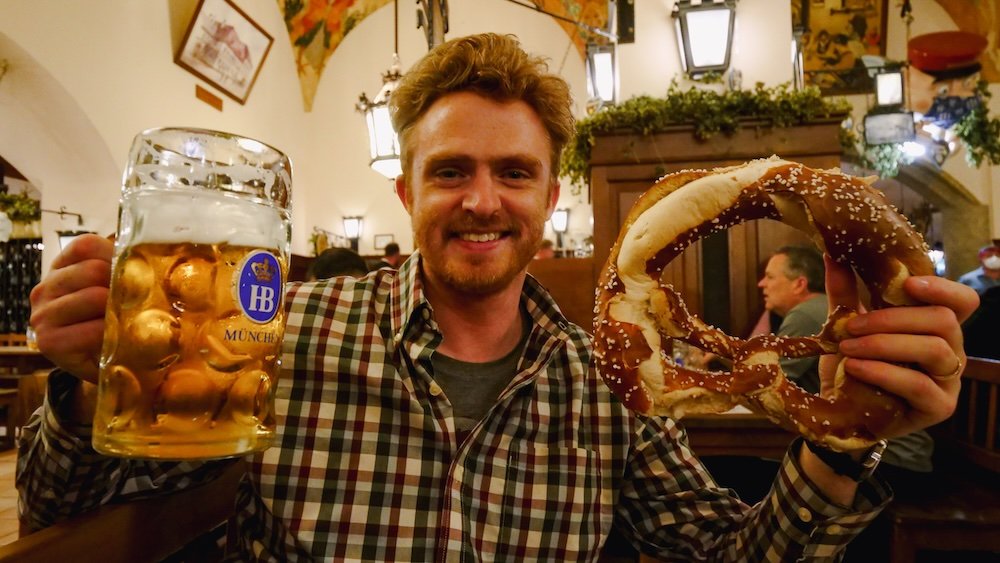
Travel can be overwhelming. Overbooked hotels, confusing train schedules, and pricey tourist traps can dampen your trip. Or maybe you’re worried about the language barrier or figuring out local customs. Munich is a large city with a long history, countless attractions, and seasonal events that can complicate your planning. We’ll tackle these concerns head-on.
Our Travel Video From Munich, Germany On Samuel and Audrey YouTube Channel: Nomadic Samuel + That Backpacker hosted
Why Munich?
Whether you’re a first-time traveler craving a whirlwind intro to Bavaria or a seasoned nomad seeking deeper local flavor, this guide suits a range of wanderers. Families can enjoy kid-friendly museums, while solo adventurers might chase the city’s vibrant nightlife. If you’re a history buff, Munich’s royal palaces and crypts will fascinate you. If you’re a foodie, the region’s hearty dishes and famous beers beckon. Essentially, if you’ve got an open heart and a curious mind, Munich offers a treasure trove of experiences.
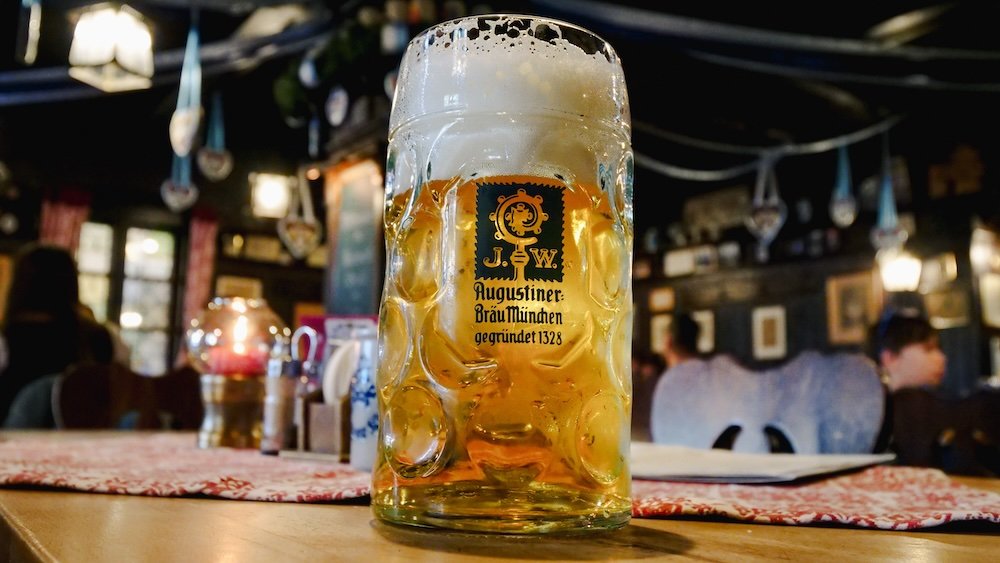
Munich is more than just Oktoberfest. It’s a place where age-old traditions thrive next to cutting-edge innovation, where centuries-old churches share the skyline with sleek high-rises, and where easygoing coziness meets bustling international flair. Ready to plan your itinerary? Let’s dive into the Top 25 Things To Do in Munich. We’ll then walk you through local cuisine, guided tours, lodging, day trips, transportation, and final tips to make your stay unforgettable. Prost to an incredible Bavarian adventure!
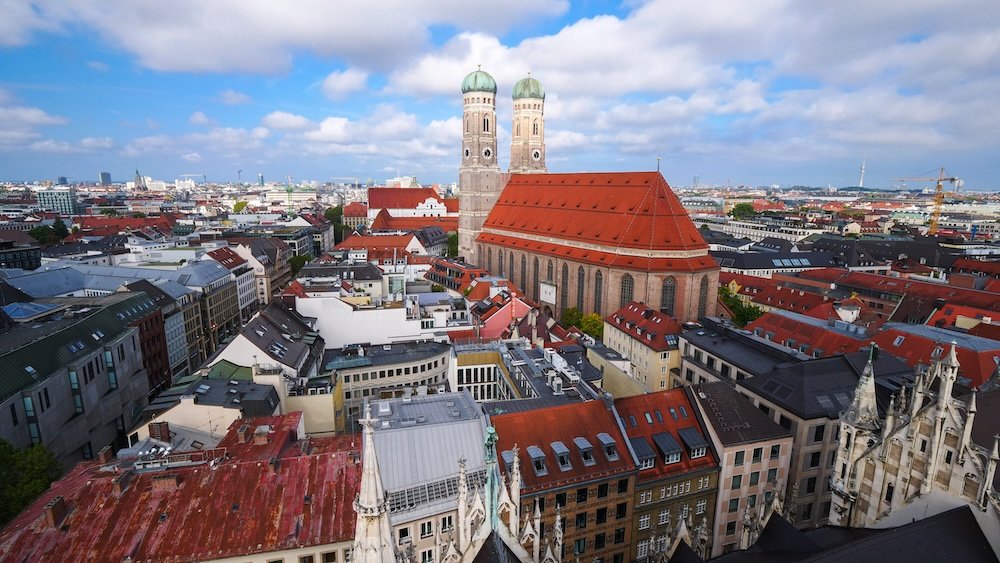
Top 25 Things To Do in Munich, Germany For Visitors
Our Food Video From Munich, Germany on Samuel and Audrey YouTube Channel: Nomadic Samuel + That Backpacker as hosts
Munich boasts an extensive list of attractions, ranging from historic squares to architectural marvels, from cozy beer gardens to hidden relics. Below are 25 must-see sites and activities. Dive in, and craft your ultimate Munich itinerary.
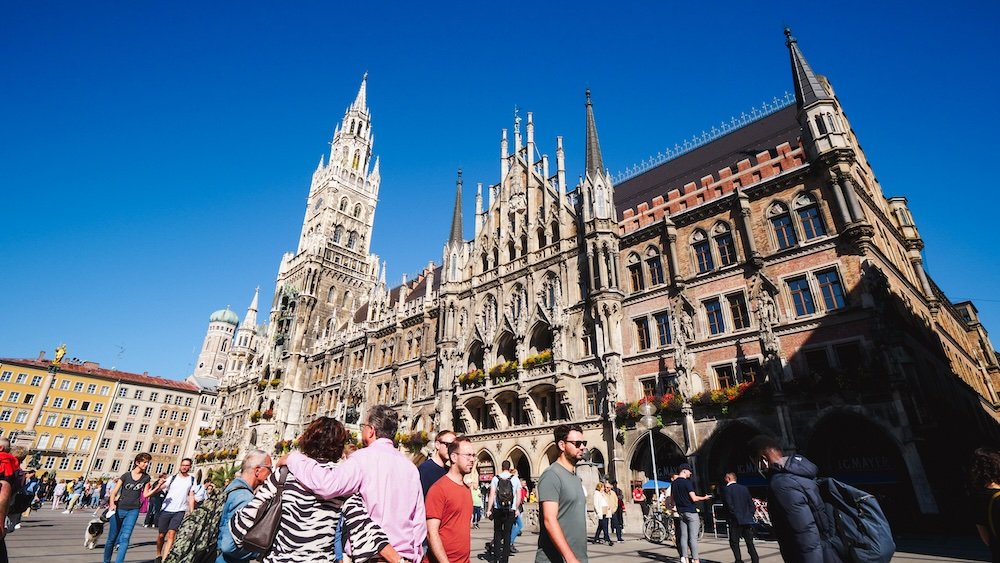
1) Marienplatz
Marienplatz stands at the heart of Munich’s Old Town, serving as the city’s central square for centuries. It’s surrounded by impressive architecture, including the Neues Rathaus (New Town Hall) and the Altes Rathaus (Old Town Hall). Street performers and bustling markets often fill the area, injecting a lively atmosphere. During the holiday season, a Christmas market lights up the square, offering mulled wine and regional treats. This spot also connects you to various other landmarks, making it an ideal starting point. Whether you’re people-watching or admiring the neo-gothic facades, Marienplatz sets a memorable tone for your journey.
- Location: Accessible via multiple U-Bahn and S-Bahn lines (Marienplatz station).
- Highlights: Outdoor cafés, vibrant street life, direct view of the New Town Hall.
- Best Time to Visit: Late morning or early evening for a more relaxed vibe.
Tip: Arrive before the crowds so you can grab photos without the midday rush.
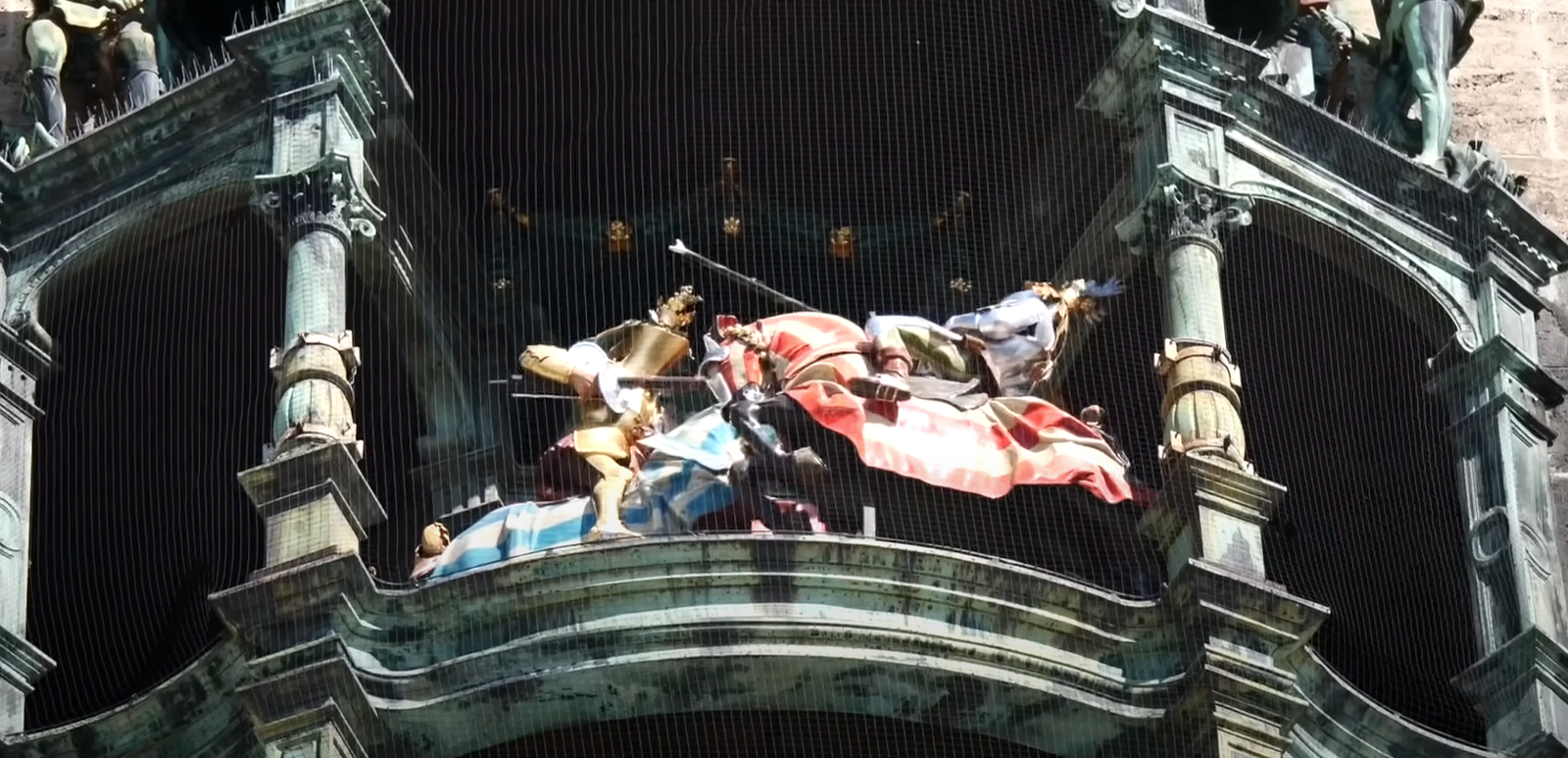
2) Glockenspiel
The Glockenspiel is perched on the facade of the New Town Hall, and it springs to life multiple times a day. Its moving figures reenact two historical events: the wedding of Duke Wilhelm V and the Schäfflertanz (Coopers’ Dance). Tiny statues spin and joust, accompanied by whimsical music. Locals and visitors alike gather below, gazing up at the 43 bells chiming in unison. The spectacle only lasts a few minutes, so timing is key. It’s a quirky tradition that captures Munich’s ability to fuse nostalgia and community fun.
- Show Times: 11 AM, 12 PM, and 5 PM (seasonal variations apply).
- Duration: Approximately 10-15 minutes.
- Viewing Tip: Stand back a bit for a fuller view of the tower’s moving figures.
Tip: Check the schedule and get there a few minutes early to secure a good vantage point.
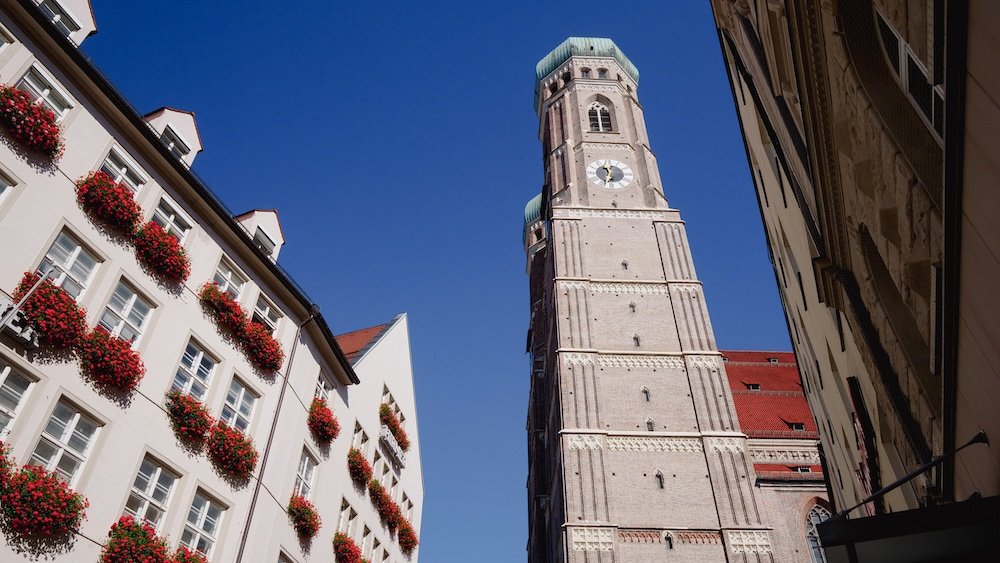
3) Munich Cathedral (Frauenkirche)
Known as the Frauenkirche, this cathedral dominates the skyline with its twin onion-domed towers. It’s the seat of the Archbishop of Munich and Freising, showcasing a mix of Gothic and Renaissance design elements. Inside, the soaring ceilings and vibrant stained glass windows are mesmerizing. Legend has it the so-called “Devil’s Footstep” (Teufelstritt) is marked on the floor—an intriguing tale that adds a dash of mystery. Despite its grand appearance, the cathedral offers pockets of peaceful reflection. Wander around at your own pace, and soak in the centuries of art and history cradled within its walls.
- Admission: Free, though donations are appreciated.
- Tower View: The south tower sometimes opens for panoramic city views.
- Architectural Note: Heavily reconstructed after WWII bombings, yet retains its original charm.
Tip: Seek out the Devil’s Footstep near the entrance for a fun local legend.
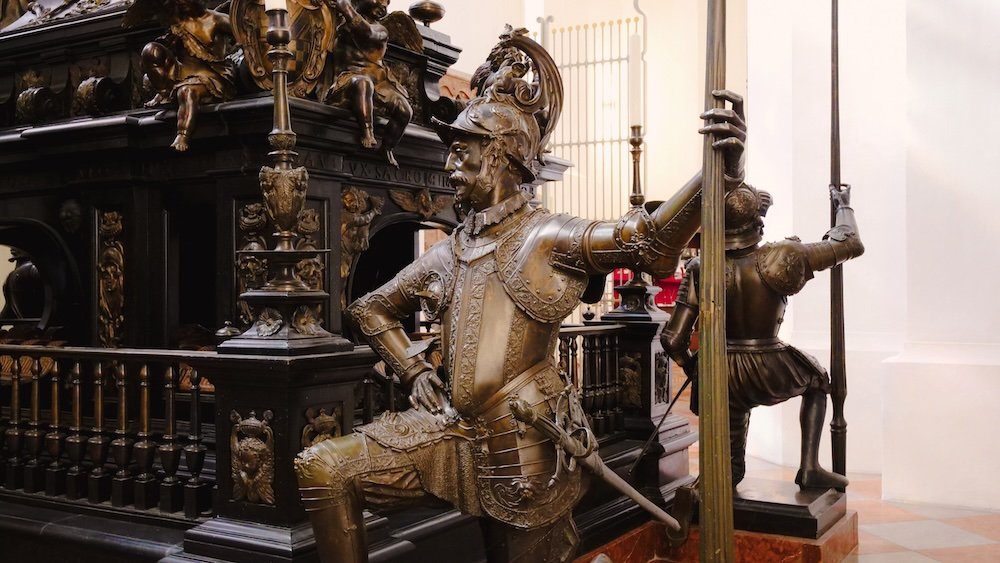
4) Tomb of Emperor Ludwig of Bavaria
Deep within the Frauenkirche, you’ll find the Tomb of Emperor Ludwig of Bavaria, also known as Ludwig IV. This final resting place carries both political and familial significance in Bavarian history. The ornate tomb detailing draws the eyes immediately, reflecting the prestige of a once-powerful ruler. Stepping closer, you’ll notice sculptures and inscriptions that commemorate his reign. It adds another layer of fascination to the cathedral, reminding us that Munich’s heritage is shaped by real people and epic tales. Observing the tomb quietly, you can sense the weight of past centuries in this solemn corner.
- Artistic Details: Intricate carvings and statues reflect medieval craftsmanship.
- Historical Context: Ludwig IV was Holy Roman Emperor in the early 14th century.
- Cathedral Staff: Sometimes on hand to answer basic questions.
Tip: Pause for a moment of silence to let the historical ambiance truly sink in.
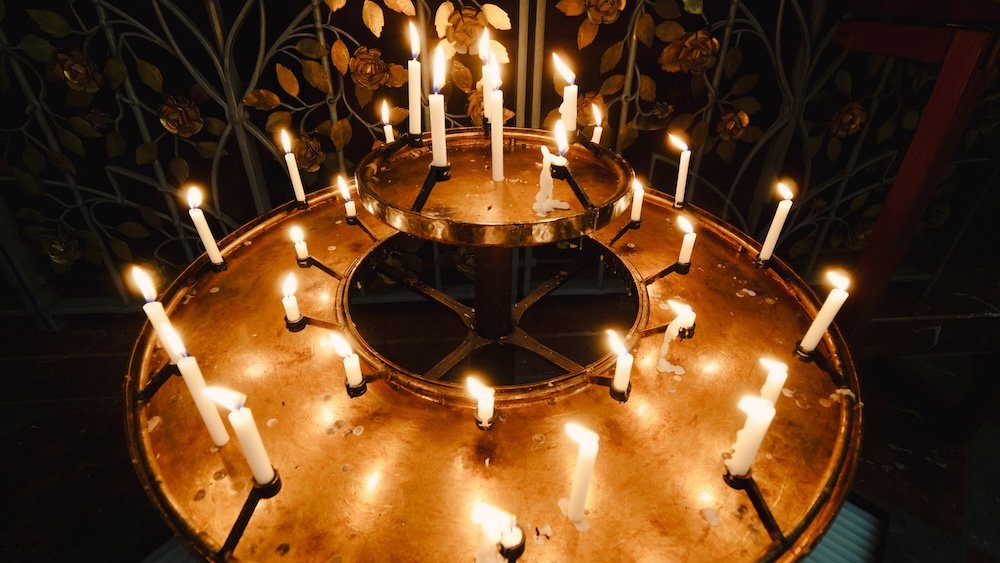
5) Bishop’s Crypt
Close to the Tomb of Emperor Ludwig lies the Bishop’s Crypt, holding the remains of past archbishops. This hidden recess might not scream tourist attraction, but it reveals Munich’s ecclesiastical legacy in a very tangible way. The crypt’s design is modest yet dignified, letting you feel the reverence once reserved for high-ranking clergy. Plaques detail names and contributions of those interred here, turning the crypt into a quiet lesson in local history. If you appreciate lesser-known spaces with a spiritual or somber mood, you’ll find this spot fascinating. Just remember to maintain respect and minimize noise.
- Atmosphere: Very calm, with hushed lighting for a reflective environment.
- Photography: Typically discouraged due to the sacred nature of the site.
- Accessibility: Might have a few steps leading down; check in advance if mobility is an issue.
Tip: Visit during off-peak hours to experience the crypt without distraction.
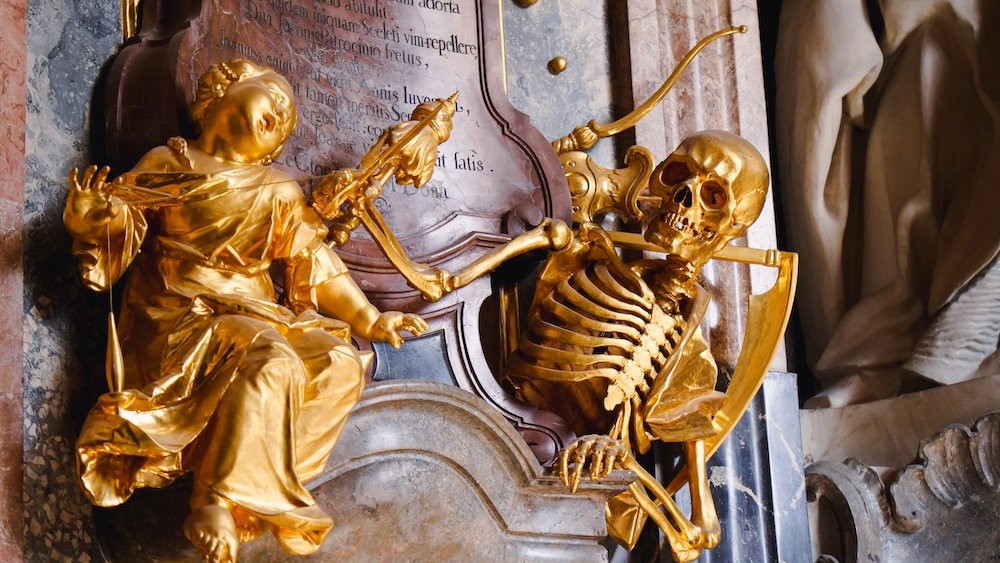
6) Asam Church (Asamkirche)
The Asam Church is a compact but lavish Baroque masterpiece, nestled almost inconspicuously in Munich’s streets. Built in the mid-18th century by the Asam brothers, it exudes a theatrical flair in its ornate interior. Frescoes swirl across the ceiling, gilded statues loom on every side, and a riot of colors floods the narrow space. Despite its modest size, the church’s design invites prolonged gazing at every intricate corner. It’s more of a private chapel than a typical parish church, which makes the experience feel intimate. Step inside, and let your eyes run wild.
- Standout Features: Spiral columns, gold-leaf accents, and dramatic lighting.
- Entrance Fee: Free, but donations are welcome.
- Photography: Allowed without flash—respectful behavior is key.
Tip: Spend time focusing on the altar where you’ll spot the most elaborate designs.
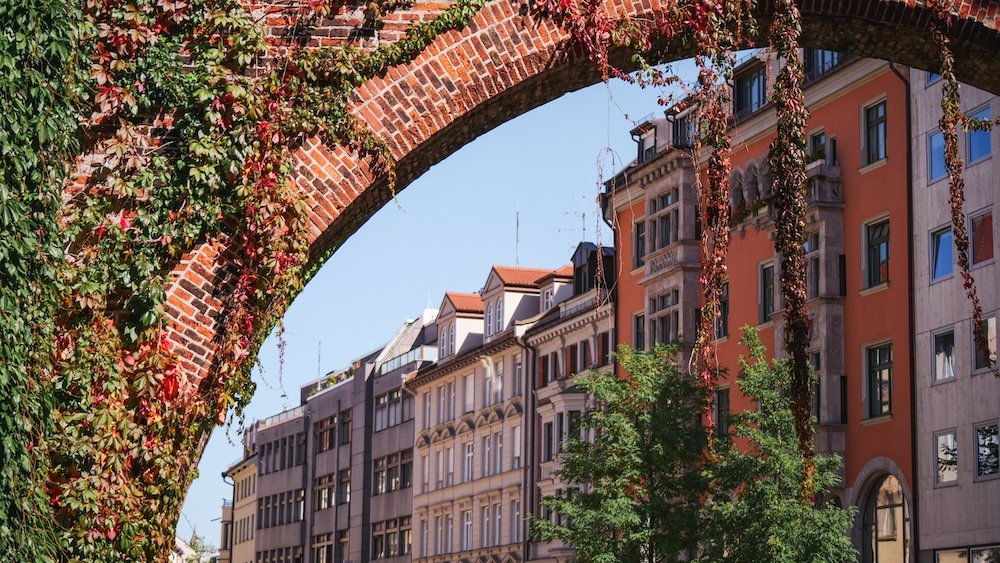
7) Sendlinger Tor
Sendlinger Tor is one of Munich’s remaining medieval city gates, marking the border between old fortifications and the more modern city. With its centuries-old brick and archways, it offers a glimpse into Munich’s defensive past. Yet the surrounding area is now busy with shops, cafés, and cinemas—showcasing how the city evolves around historic roots. While you can’t climb the gate, you can snap unique photos from various angles. If you’re into architecture or local history, the gate stands as a silent witness to the city’s expansions over time. It’s a brief stop, but one that speaks volumes about Munich’s layered heritage.
- Nearby Entertainment: A cluster of cinemas and restaurants.
- Orientation Point: A handy landmark when navigating the southern section of the Old Town.
- Seasonal Touches: Sometimes illuminated during events or festivals.
Tip: Combine this stop with a stroll toward Marienplatz to appreciate the contrast of old and new.
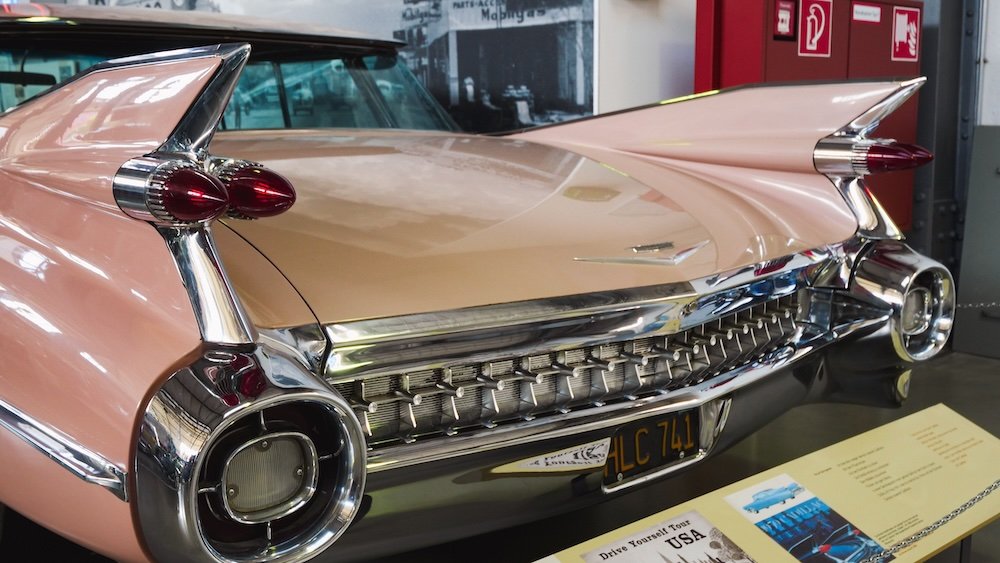
8) Deutsches Museum Verkehrszentrum (Transportation Museum)
The Verkehrszentrum is a branch of the Deutsches Museum dedicated to transport history. You’ll find vintage cars, early bicycles, steam engines, and futuristic concept vehicles all under one roof. Interactive exhibits let visitors grasp how transport shaped society, from everyday commutes to epic road trips. Kids often enjoy the hands-on sections, while gearheads can geek out over mechanical details. The entire museum is well-lit and spacious, making your exploration relaxed. If you love planes, trains, and automobiles, this place is a must.
- Location: On the Theresienhöhe, not far from the Oktoberfest grounds.
- Exhibit Themes: Road traffic, mobility in urban settings, and historical shifts in engineering.
- Tickets: Typically separate from the main Deutsches Museum, so plan accordingly.
Tip: Check for special events—sometimes they host classic car shows or family workshops.
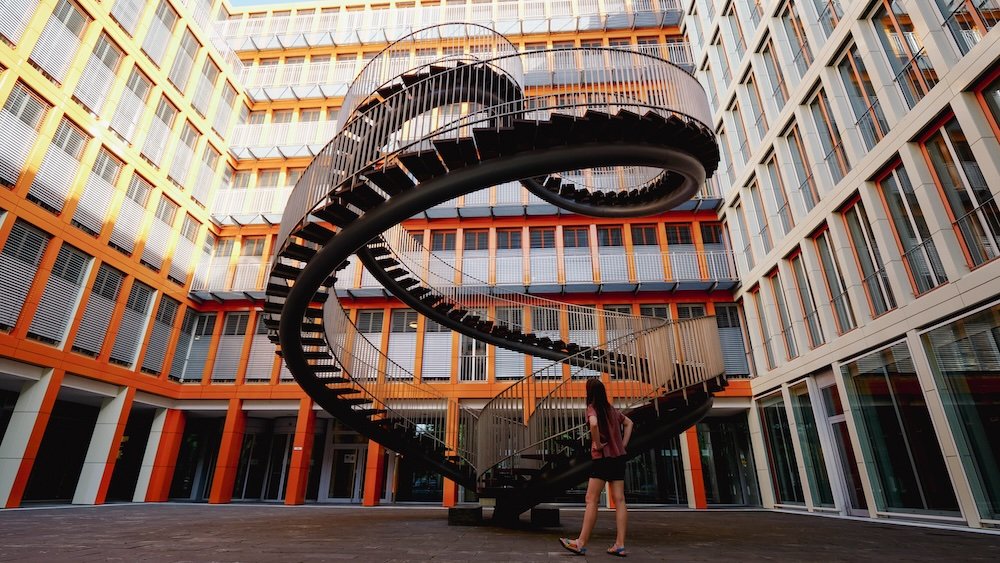
9) Endless Staircase
Tucked inside an office complex in the Westend district, the Endless Staircase (Umschreibung) is a quirky art installation by Olafur Eliasson. At first glance, it’s a mesmerizing loop of steps that appear to ascend and descend infinitely. People swing by to snap creative photos, test illusions of perspective, or simply marvel at the design. This piece plays with geometry and infinite loops, turning a mundane courtyard into a creative hotspot. Although it’s a modern attraction, the staircase resonates with Munich’s knack for blending tradition and innovation. Perfect for Instagrammers or fans of contemporary art.
- Address: In the courtyard of KPMG, Ganghoferstrasse 29, open to the public during office hours.
- Crowd Factor: Generally light, but can get busier on weekends.
- Duration: 10-15 minutes is enough for photos and a closer look.
Tip: Visit on a sunny day to catch the best natural light for your pictures.
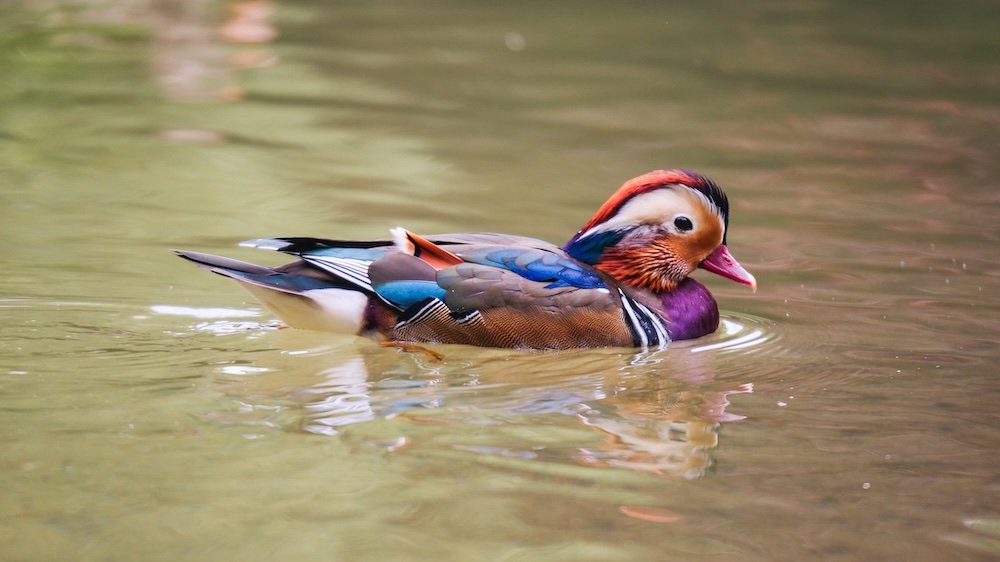
10) Bavaria Park
Bavaria Park offers a calm retreat near the hustle and bustle of central Munich. It’s a green oasis with meandering pathways, soft lawns, and plenty of shade from mature trees. Locals often unwind here, especially on weekends, reading a book or enjoying a casual picnic. Depending on the season, you might catch small events or cultural gatherings in the park. The relaxed ambiance contrasts nicely with the city’s busy core. If you need a breather between museums and historical sites, this park is an ideal pit stop.
- Amenities: Benches, playgrounds, and some seasonal food kiosks.
- Proximity: Close to the Deutsches Museum Verkehrszentrum, so easy to combine visits.
- Dog-Friendly: Locals do walk their pets here; keep an eye on posted rules.
Tip: Pack a light snack and enjoy a moment of tranquility before resuming sightseeing.
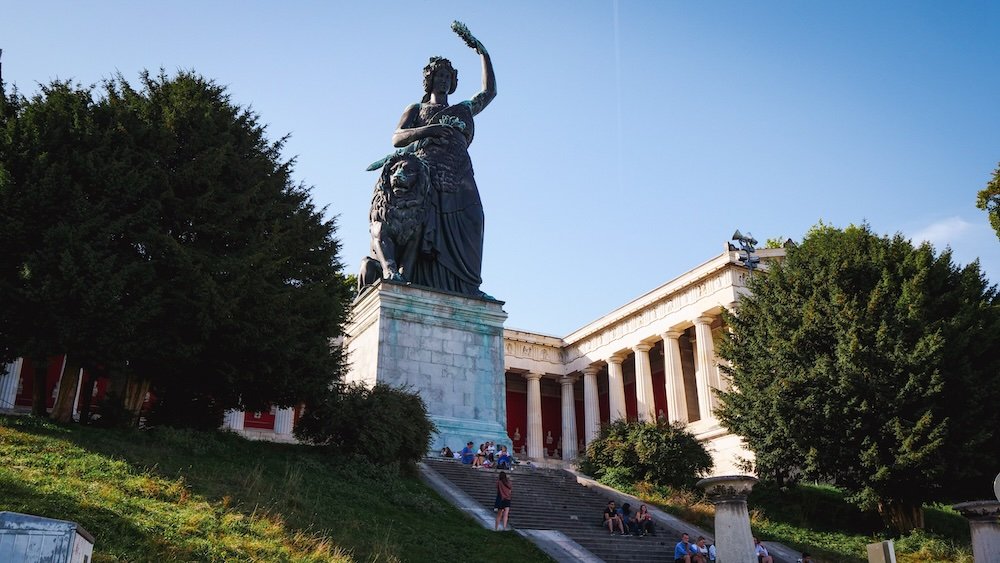
11) Statue of Bavaria
The Statue of Bavaria stands guard over the Theresienwiese, home to Munich’s famed Oktoberfest. She symbolizes the strength and independence of the Bavarian state, towering nearly 20 meters tall. An internal staircase leads up to a viewing platform inside her head, offering a unique vantage point. From that high perch, you’ll see the festival grounds and glimpses of the city skyline. The statue’s base also houses a small museum detailing its construction and cultural significance. It’s a potent reminder that Bavarian pride runs deep.
- Entry: Small fee to climb inside the statue.
- Views: Best on clear days; otherwise, city views might be limited.
- History: Commissioned by King Ludwig I and cast in the mid-19th century.
Tip: Visit during Oktoberfest to experience the full grandeur of the statue amid festival buzz.
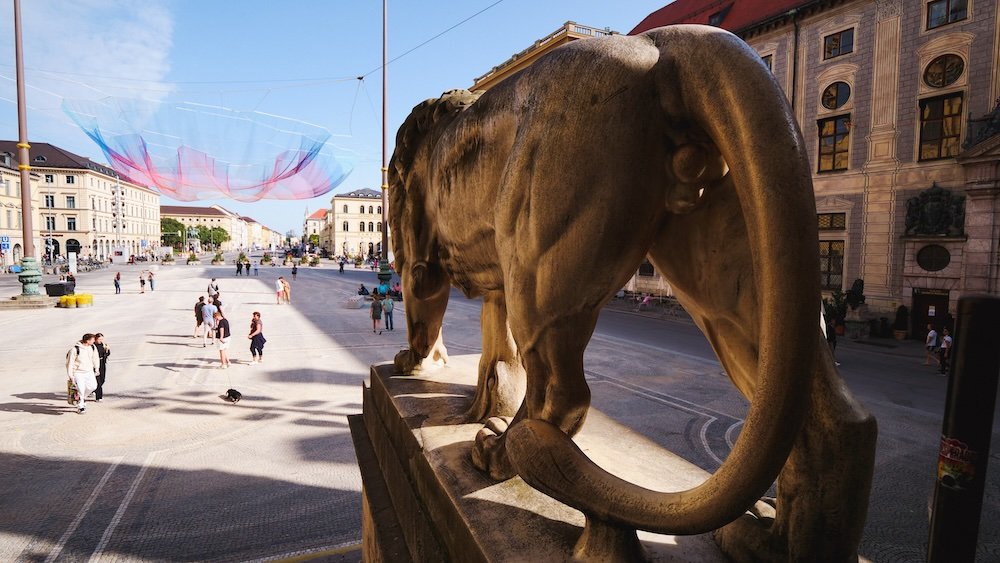
12) Odeonsplatz
Odeonsplatz is a broad square marked by grand architecture, including the yellow-hued Theatine Church and the Feldherrnhalle (Field Marshals’ Hall). This open space has witnessed key historical events, from royal parades to political gatherings. Today, it’s a place where pedestrians shuffle between shops, museums, and cafes. Street musicians often perform, taking advantage of the square’s acoustics. The overall vibe is one of regal flair mixed with modern city life. It’s also a strategic gateway to the Hofgarten and Munich Residence, so you can easily branch out.
- Getting There: U-Bahn stop “Odeonsplatz” on lines U3/U4/U5/U6.
- Photo Ops: The sweeping views of Ludwigsstrasse are particularly striking.
- Events: Occasionally hosts concerts or open-air cultural festivals.
Tip: Stand near Feldherrnhalle for an excellent angle capturing both the Theatine Church and the bustling square.
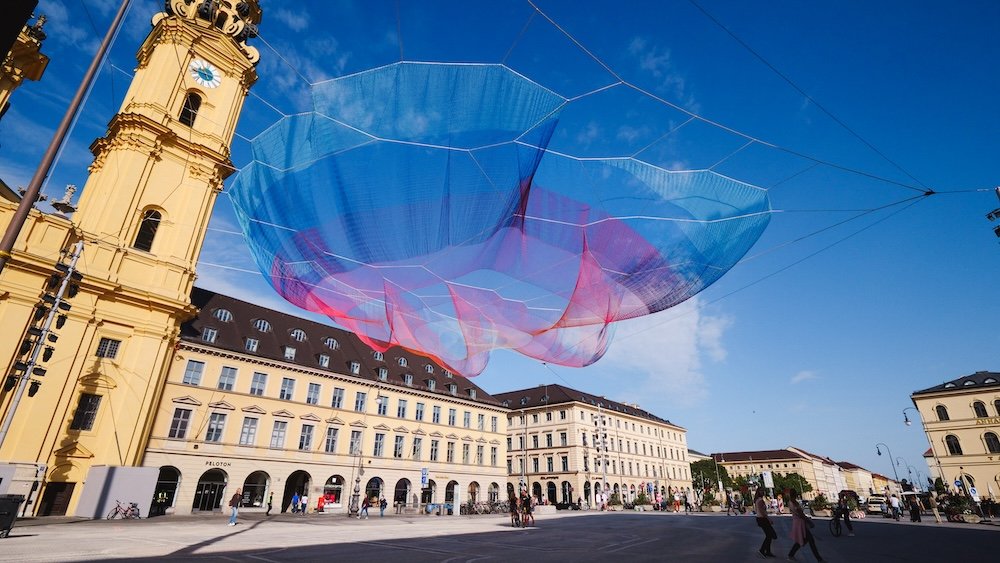
13) Theatine Church (Theatinerkirche)
Rising over Odeonsplatz is the distinctive baroque Theatine Church. Its pastel-yellow exterior and intricately sculpted facade set the stage for a bright, airy interior. Frescoes and marble statues greet you inside, bathed in soft natural light. Built by Elector Ferdinand Maria and his wife Henriette Adelaide, it’s dedicated to St. Cajetan, reflecting an Italianate style rarely found this far north. Listening to an organ recital here can be magical, the music echoing under vaulted ceilings. The church’s dreamy ambience contrasts with the city’s more austere gothic structures, offering a fresh architectural treat.
- Free Entry: Donations welcomed.
- Interior Highlights: White stucco work, ornate chapels, and a grand altar.
- Restoration: Damaged in WWII, extensively rebuilt and maintained.
Tip: Check the calendar for organ concerts or choir performances that elevate your visit.
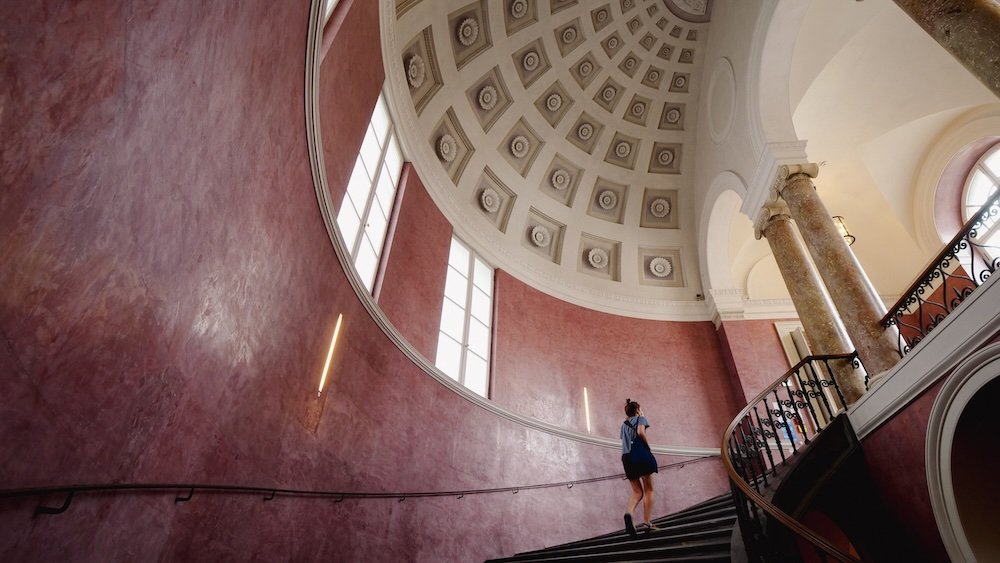
14) Munich Residence (Former Royal Palace)
Once the seat of Bavarian royalty, the Munich Residence sprawls across multiple buildings showcasing lavish decor and centuries of European art. Grand halls, elaborate tapestries, and a jaw-dropping assortment of royal jewelry give you a glimpse of how the Wittelsbach family lived. The complex includes the Treasury, packed with crowns and regalia, and several courts displaying relics and paintings. Wandering the corridors, you might feel transported back in time to an age of opulent courts and political intrigue. Each room tells a different story, from Renaissance influences to rococo ornamentation. Expect to spend a few hours immersing yourself in this regal world.
- Ticket Options: Combined passes for Residence, Treasury, and Cuvilliés Theatre.
- Highlights: Ornate throne rooms, porcelain collections, and gilded chapel.
- Audio Guides: Highly recommended for detailed historical context.
Tip: Wear comfortable shoes; the palace is vast, and you’ll be on your feet for a while.
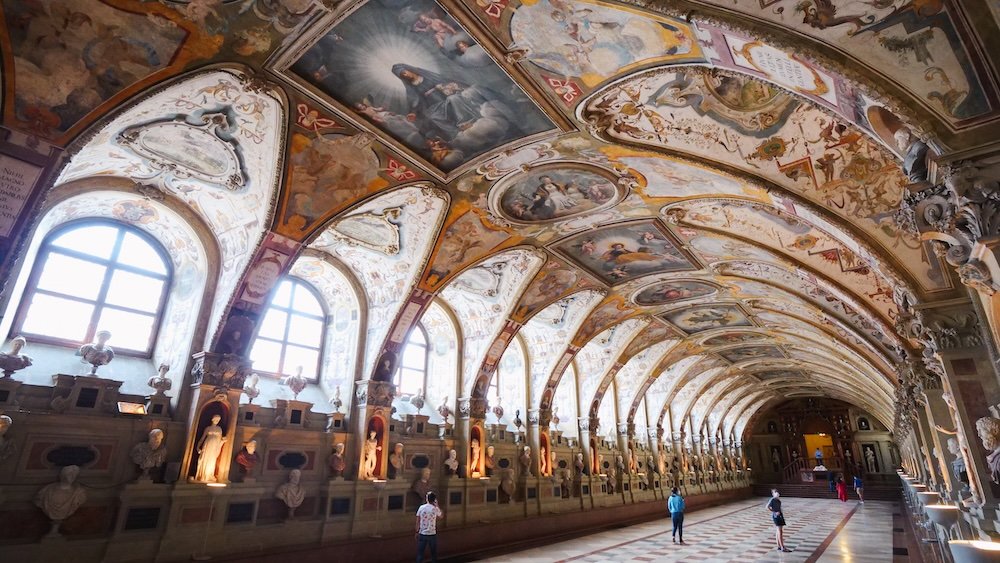
15) Antiquarium
Within the Munich Residence, the Antiquarium stands out for its breathtaking Renaissance architecture and extensive collection of antique sculptures. This hall is long, elegant, and decorated with vibrant frescoes and coats of arms. Initially built to showcase the Wittelsbach dukes’ collection, it evolved into a banqueting hall that hosted grand feasts and ceremonies. The combination of classical artifacts and decorative arches makes the space feel both scholarly and extravagant. You’ll likely spend a good chunk of time craning your neck upward, marveling at the intricate ceiling artwork. Amid the entire Residence, the Antiquarium offers a distinct aesthetic you shouldn’t miss.
- Located In: The northern wing of the Munich Residence complex.
- Photography: Allowed, but no flash to protect the artworks.
- Atmosphere: Typically quieter than other sections, giving you room to absorb the details.
Tip: Look closely at the frescoes—they depict Bavarian towns, each with unique details.
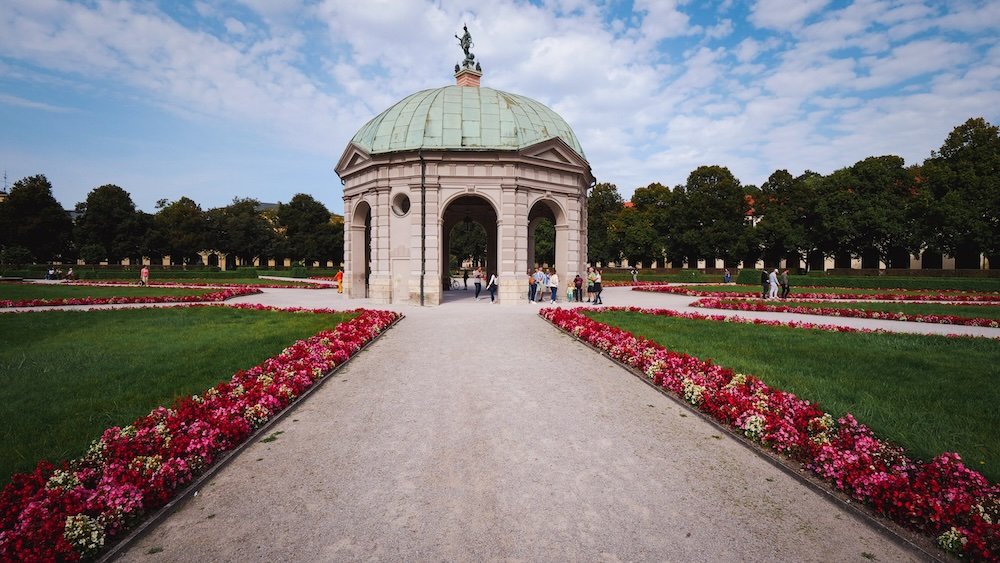
16) Hofgarten & Temple of Diana
Adjacent to the Residence, the Hofgarten is a formal Renaissance garden perfect for a peaceful stroll. Gravel paths, manicured flower beds, and fountains lend a timeless elegance. Its centerpiece, the Temple of Diana, is a small pavilion often hosting spontaneous concerts. On sunny days, you’ll see locals reading, chatting, or practicing tai chi on the lawns. The garden also provides a gateway to the English Garden via a walkway under the busy streets. Enjoy the interplay of sunlight, greenery, and baroque architecture as you unwind in this urban oasis.
- Free Admission: Accessible year-round.
- Viewing Points: Arcades along the edges frame lovely vistas of the garden.
- Café Tip: There’s a quaint café on the western side for refreshments.
Tip: Stop by at twilight when the lighting makes the garden especially enchanting.
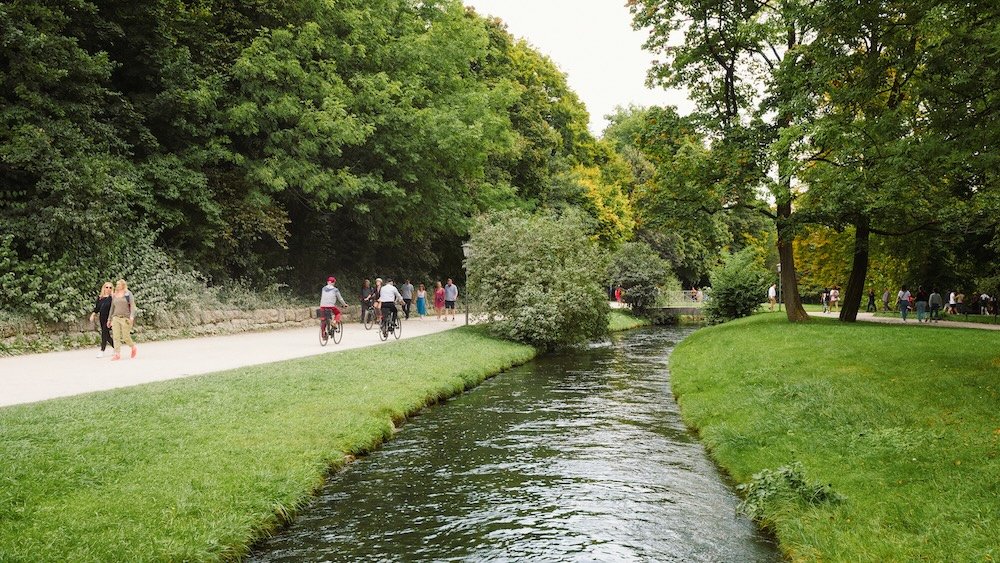
17) English Garden
The English Garden is one of the world’s largest urban parks, sprawling from central Munich to its northeastern suburbs. Whether you fancy sunbathing on its vast lawns, surfing on the Eisbach wave, or savoring beer at the Chinese Tower, this park has it all. Winding pathways lead to secluded spots, hidden streams, and scenic ponds. In the summer, it’s common to see people picnicking, playing frisbee, or even engaging in a bit of “clothing-optional” sunbathing in certain areas. The park’s variety ensures there’s something for everyone, from family outings to quiet, introspective walks. Embrace its laid-back vibe and let nature recharge you.
- Entry: Free and open 24/7.
- Key Landmarks: Japanese Tea House, Monopteros Temple, and the Chinese Tower Biergarten.
- Activities: Biking, jogging, paddle-boating, or catching surfers at the Eisbach.
Tip: Rent a bike to cover more ground and discover hidden corners.
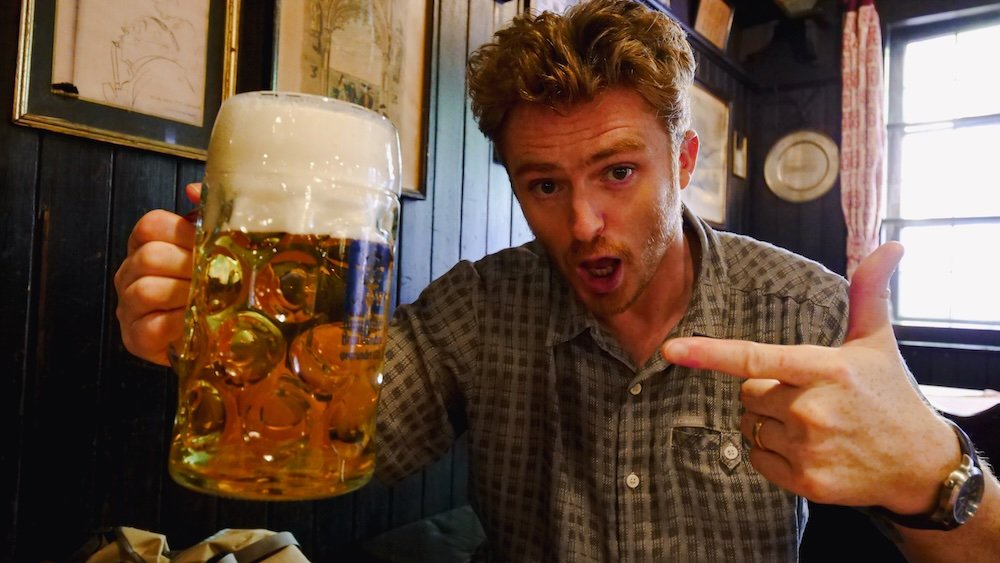
18) German & Bavarian Foods to Try
Munich’s culinary scene brims with hearty German fare and local Bavarian specialties. You’ll encounter pretzels so large they double as dinner plates, sausages bursting with flavor, and crispy pork knuckles (Schweinshaxe) that define comfort food. Don’t skip the sweet side: Apfelstrudel and Kaiserschmarrn are sure to delight your dessert cravings. Many restaurants and beer halls proudly serve regional produce, making each bite an authentic taste of Bavaria. Wash it all down with a refreshing local brew or a non-alcoholic Radler mix if you prefer. Exploring Munich’s food scene is a journey through tradition, simplicity, and robust flavors.
- Snack Favorites: Leberkäse rolls, currywurst, and Obatzda cheese spread.
- Vegetarian Tip: Search for dishes like Käsespätzle (cheesy noodles) in local menus.
- Beer Culture: Seasonal brews like Maibock or Oktoberfest specials are worth trying.
Tip: Join a local food tour to discover hidden eateries and insider stories behind each dish.
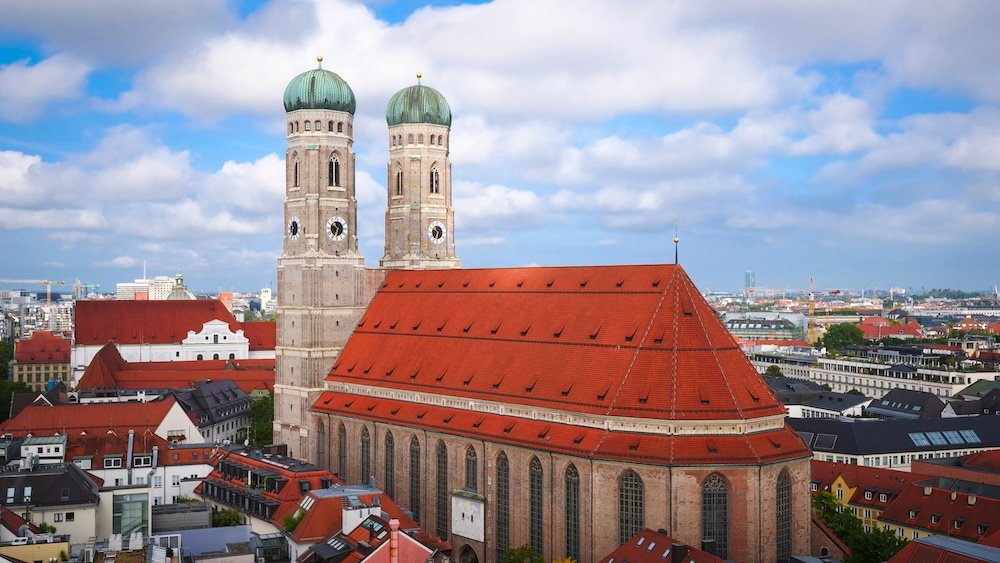
19) Views from Neues Rathaus (New Town Hall)
The Neues Rathaus is more than just a bureaucratic seat; it also offers stunning views of Munich from its tower. An elevator (and sometimes stairs) takes you to an observation deck overlooking Marienplatz and beyond. From this vantage point, you’ll see the twin domes of the Frauenkirche, the lush English Garden in the distance, and the Alps on a clear day. Photographing the city’s rooftops can be a highlight for shutterbugs. The tower climb is relatively easy, so most travelers can manage it. If you crave a bird’s-eye perspective without hiking up church towers, this is your spot.
- Ticket Fee: Modest charge for the elevator.
- Best Time: Clear morning or late afternoon for vibrant lighting.
- Elevator Access: Avoid peak midday crowds to minimize wait times.
Tip: Take a panoramic shot that captures both the Marienplatz bustle and the distant horizon.
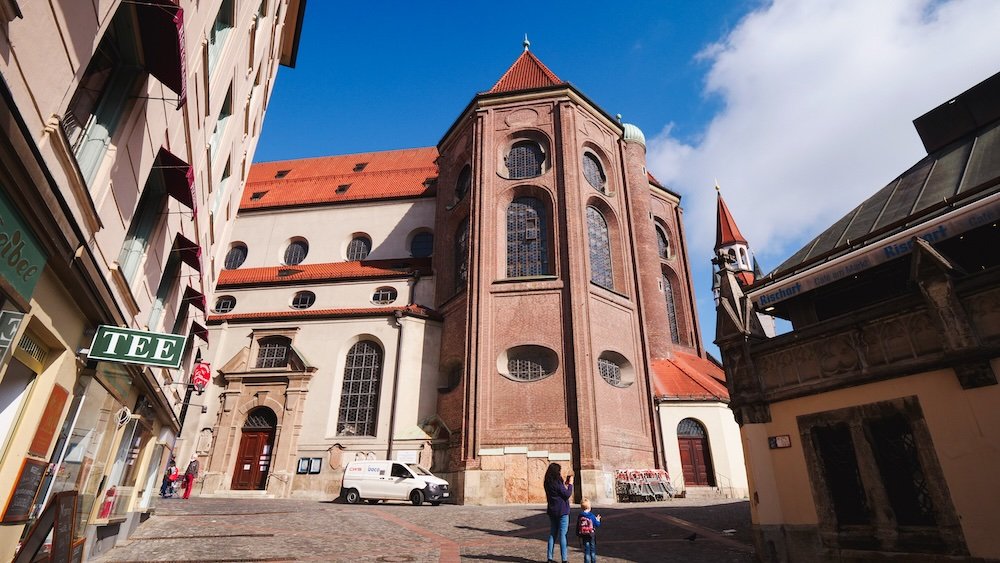
20) St. Peter’s Cathedral (Peterskirche)
Nicknamed “Old Peter,” St. Peter’s Cathedral is Munich’s oldest parish church, blending Gothic, Baroque, and Rococo elements. Visitors often ascend its tower for a 360-degree city panorama—though the narrow wooden steps can be a workout. Inside, gilded altars and elaborate frescoes form a dramatic sanctuary. It’s a place where centuries of artistry converge, each corner telling stories of the city’s religious and cultural roots. The vantage from its tower arguably rivals that of the New Town Hall, but with a more rustic, historic feel. Wear comfy shoes if you plan to tackle the climb.
- Entrance: Free for the church interior; tower climb requires a small fee.
- Height: Over 300 steps to the viewing platform.
- Highlights: Magnificent high altar, side chapels, and relics.
Tip: Go early on weekdays to avoid lines at the tower’s narrow staircase.
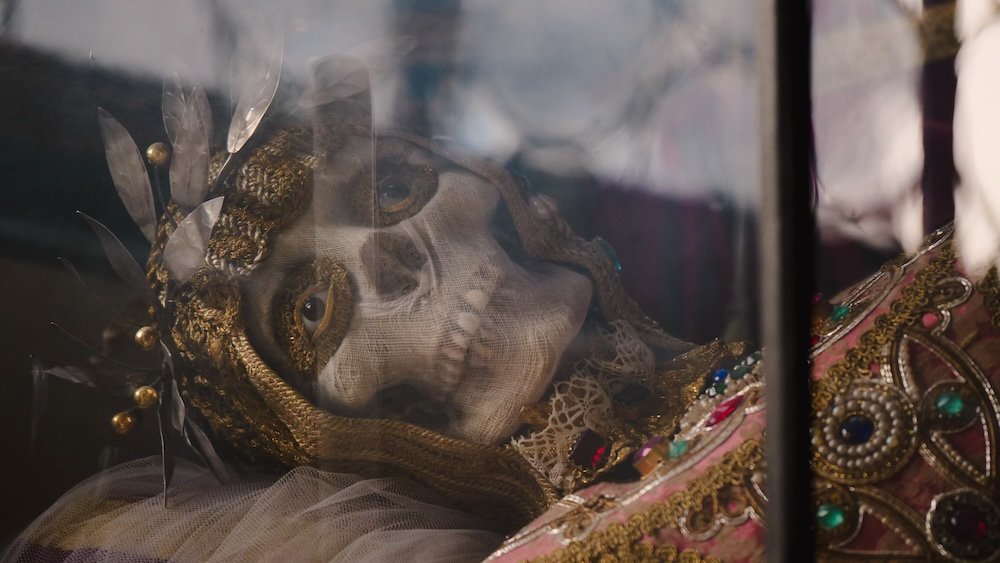
21) Jeweled Skeleton of St. Munditia
In a side chapel of St. Peter’s Cathedral rests the jewel-encrusted skeleton of St. Munditia, a relic believed to date back to early Christian martyrs. Decked out in precious stones and golden ornaments, the skeleton is displayed in a glass case. While it might sound eerie, it reflects a centuries-old tradition of venerating holy relics in lavish style. Many visitors find it both fascinating and unsettling—yet undeniably memorable. The artistry alone, from the gold filigree to the embedded gems, is striking. It’s a reminder of how faith, art, and the macabre once intertwined in grand expressions of devotion.
- Viewing: Free, part of St. Peter’s Cathedral.
- Photography: Discreet photos allowed, but respect the sacred setting.
- Cultural Insight: Reflects the Counter-Reformation period’s emphasis on relics.
Tip: Read the info plaques around the shrine to grasp the historical context of this unusual exhibit.
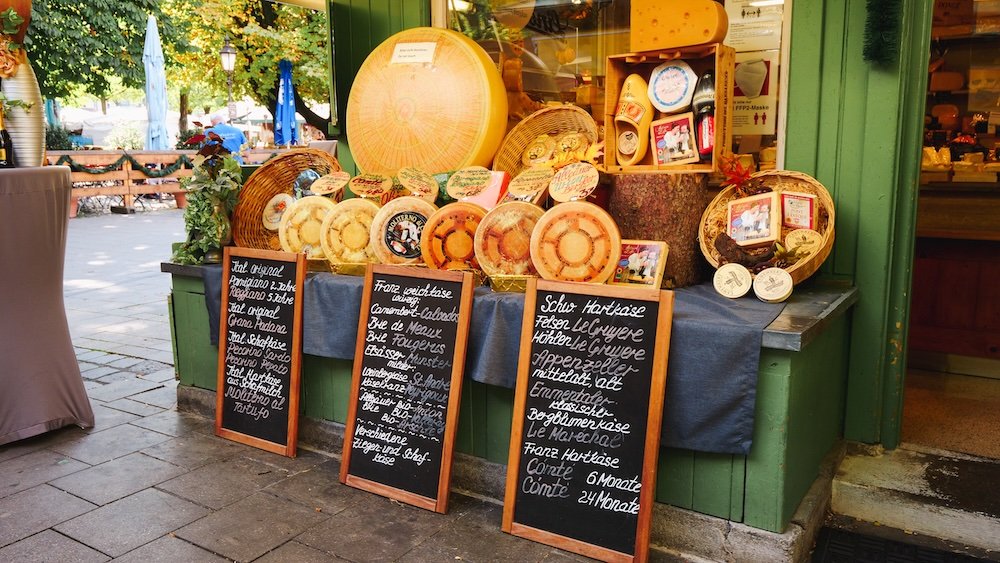
22) Viktualienmarkt & Biergarten
Viktualienmarkt is Munich’s central food market, teeming with fresh produce, gourmet stalls, and a lively atmosphere. Stroll among colorful displays of fruits, cheeses, sausages, and exotic spices. The air smells of roasted nuts and fresh flowers, especially in warmer months. At its center sits a biergarten with communal tables, often filled with locals grabbing a quick lunch or an afternoon beer. You can bring your own food from the market stalls and pair it with a cold drink from the biergarten kiosk. It’s a snapshot of Bavarian conviviality, where old traditions and modern tastes blend seamlessly.
- Operating Hours: Typically 8 AM to late afternoon (closed Sundays and holidays).
- Local Specialties: Must-try items include fresh pretzels, fruit smoothies, and local cheeses.
- Seating: First-come, first-served at the shared tables.
Tip: Visit in the morning for the freshest produce and fewer crowds.
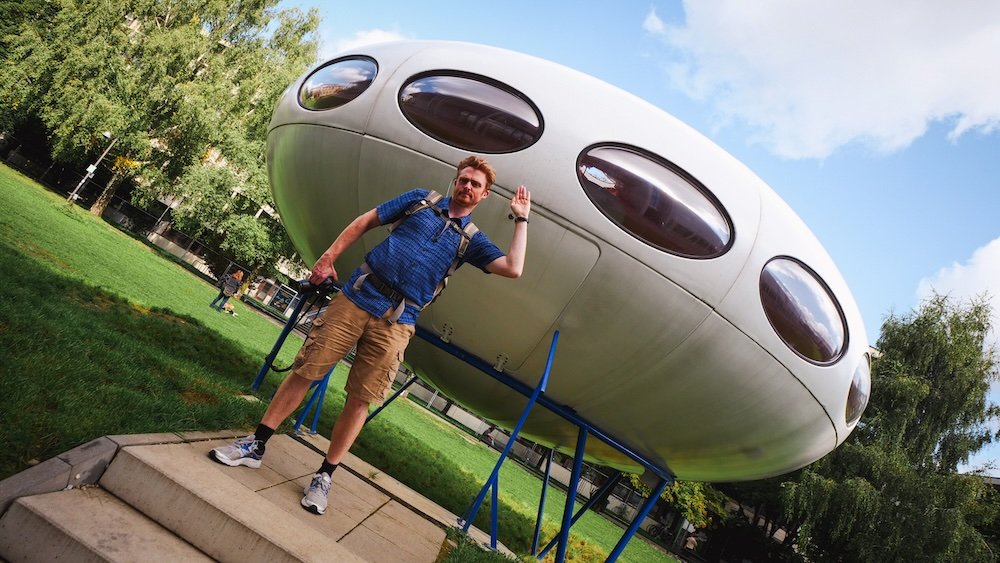
23) UFO Futuro Haus
The UFO Futuro Haus is a rare architectural oddity resembling a flying saucer, located in the Werksviertel district near Ostbahnhof. Designed in the 1960s by Finnish architect Matti Suuronen, the Futuro House was intended as a portable ski chalet. This particular model in Munich pays homage to retro-futuristic design, drawing curious visitors who love unique structures. While not always open for inside tours, peeking through the windows or snapping photos from outside is still entertaining. The area around it is undergoing modern developments, creating a contrast between futuristic nostalgia and cutting-edge city planning. It’s a short but sweet stop for architecture buffs.
- Exact Position: Riesstrasse area, but check local guides as it sometimes moves or is under renovation.
- Access: Often viewable from outside, though interior access can be restricted.
- Cultural Note: One of the few surviving Futuro Houses worldwide.
Tip: Pair this visit with a trip to nearby bars or music venues in the Werksviertel, known for its nightlife.
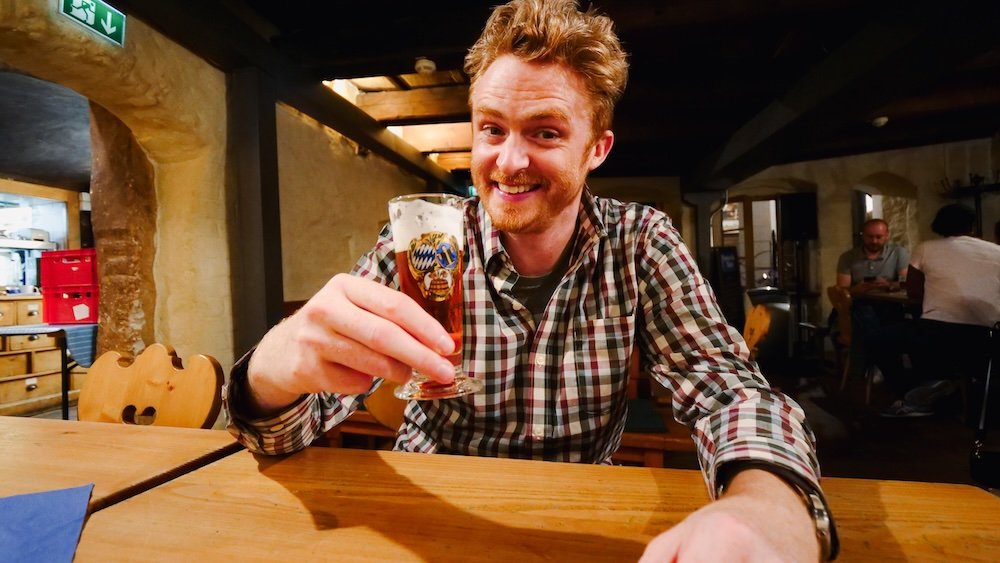
24) Bavarian Beer Tour
A Bavarian Beer Tour is a pilgrimage for beer enthusiasts seeking to understand Munich’s brewing heritage. Guided tours often include visits to historic breweries or local pubs, offering a lesson on the Reinheitsgebot (Beer Purity Law) and production methods. Along the way, you’ll sample various beer styles—Helles, Dunkel, Weißbier—and savor traditional snacks like pretzels or Obatzda cheese spread. Many tours also weave in bits of Munich history, from monastic brewing traditions to the rise of big beer halls. Expect lively group dynamics, particularly if you share the journey with other travelers. It’s equal parts fun and education, capturing the essence of Bavarian conviviality.
- Popular Operators: Multiple companies run evening pub crawls or daytime brewery tours.
- Price Range: Varies by duration and number of beer tastings included.
- Pacing: Typically moderate, but some tours get more energetic in later stops.
Tip: Stay hydrated and pace yourself—Bavarian beers pack more punch than you might expect.
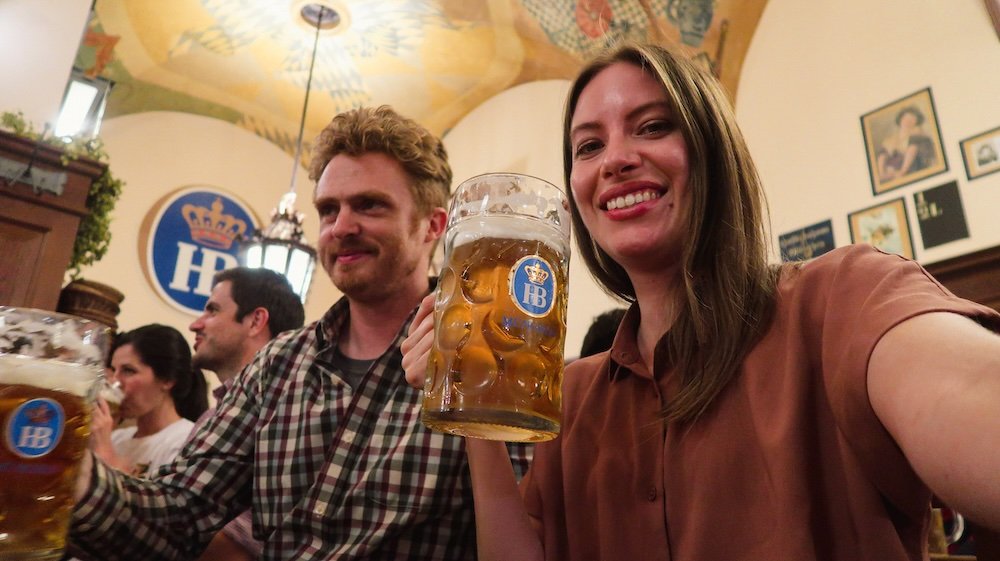
25) Hofbräuhaus (Beer Hall)
Capping our list is the legendary Hofbräuhaus, arguably the world’s most famous beer hall. Founded in the 16th century by the Duke of Bavaria, it’s a living monument to Munich’s beer culture. Long wooden tables, lively brass bands, and clinking steins fill the massive hall with raucous energy. Locals mingle with tourists, sometimes in lederhosen and dirndl, belting out traditional tunes. The menu revolves around Bavarian favorites—think roast pork, sausages, and giant pretzels. A visit here is as much about atmosphere as it is about the beer itself.
- Seating: Shared tables, so don’t be shy about making new friends.
- Music: Live oompah bands play daily, adding to the festive vibe.
- Souvenirs: Branded steins and T-shirts are available if you want a keepsake.
Tip: Arrive early in the evening to grab a seat—especially during peak tourist seasons and weekends.
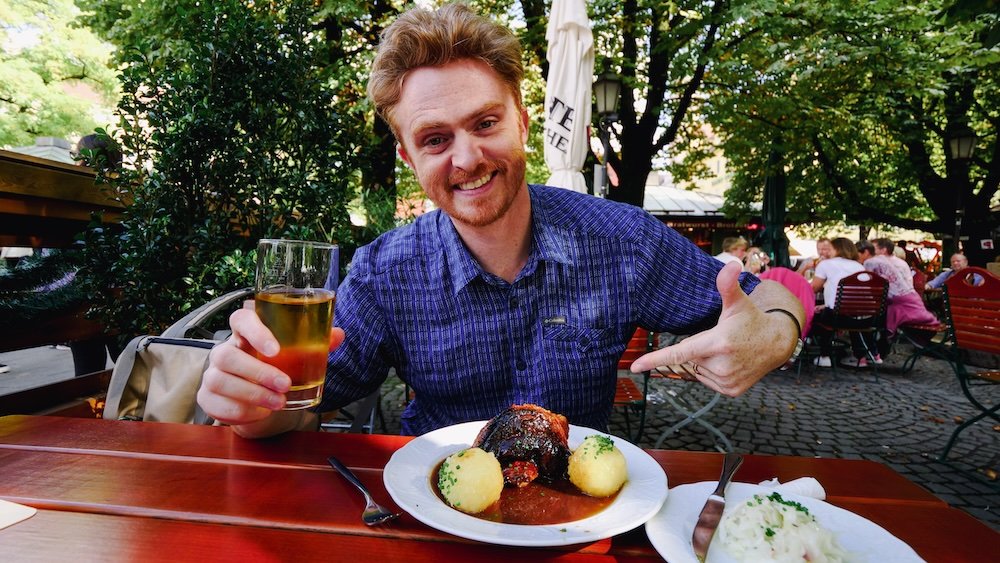
What To Eat and Drink in Munich, Germany
Munich’s culinary scene pairs Bavaria’s hearty traditions with global influences that reflect the city’s international flair. Whether you crave classic German comfort foods or innovative fusion cuisine, you’ll find plenty of things to do for your taste buds here. Let’s break down the must-try bites and beverages.
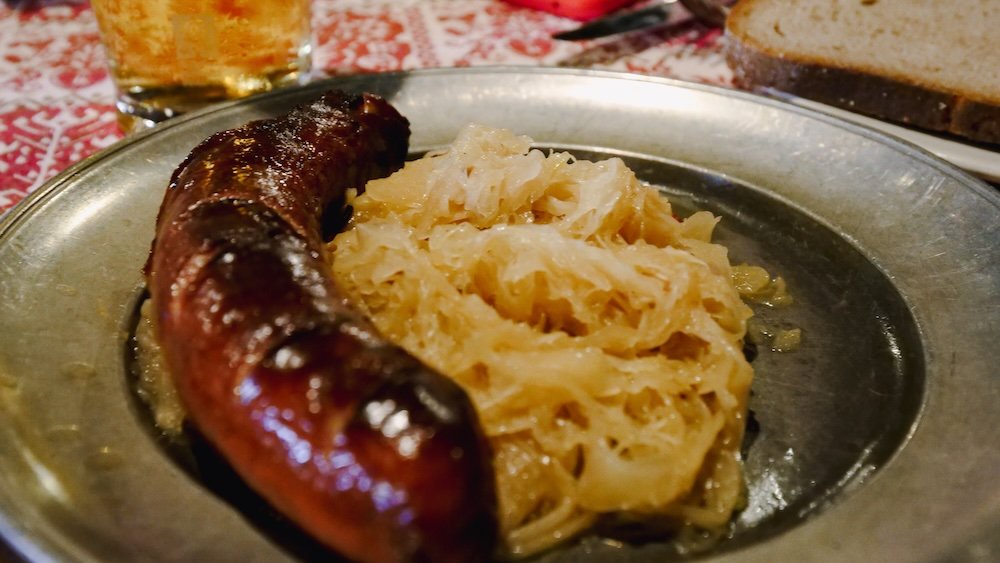
Classic Bavarian Fare
Schnitzel (breaded and fried cutlet), Weisswurst (white sausage), and Schweinshaxe (pork knuckle) are staples in Bavarian menus. Served with sauerkraut or warm potato salad, these dishes showcase the region’s love for rich, savory flavors. You’ll also encounter Leberkäse (a type of meatloaf) in sandwich form—a quick snack found at street vendors. On the side, Brezn (pretzels) are a ubiquitous must-try: fluffy inside, crisp outside, and often larger than your plate. For a sweet finale, order Kaiserschmarrn—shredded pancakes dusted with powdered sugar, traditionally served with applesauce or fruit compote.
- Portion Sizes: Hearty and often shareable.
- Seasonal Specials: In spring, look for spargel (white asparagus) on menus.
- Pairing: These classics go perfectly with a tall mug of beer.
Tip: Morning is prime time for Weisswurst with sweet mustard and a pretzel—just remember, Bavarians say you shouldn’t eat Weisswurst after noon!
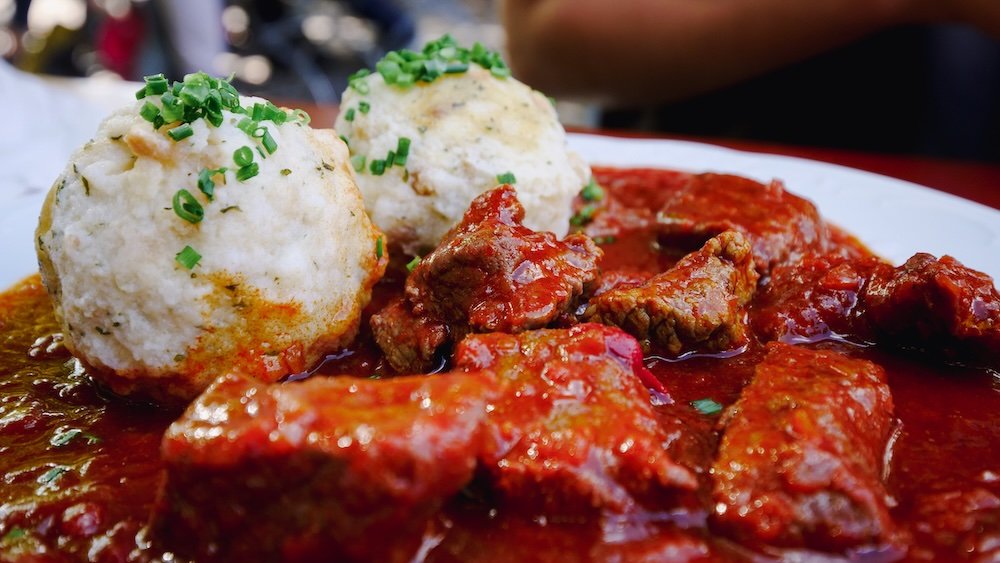
Modern Bavarian & Fusion
Munich isn’t just old-school. A new wave of chefs is reinventing Bavarian dishes with lighter sauces, organic ingredients, and global spices. You might find Käsespätzle topped with caramelized onions and fresh herbs, or pork schnitzel paired with Asian-inspired slaw. Vegetarian and vegan options are increasingly common, reflecting Munich’s progressive foodie culture. Restaurants in trendy areas like Glockenbachviertel or Maxvorstadt often experiment with seasonal produce and surprising flavor combos. Even traditional beer halls sometimes offer “healthier” spins on classics, like roasted veggies instead of potato dumplings.
- Restaurant Guides: Check out local magazines like “Prinz” or “InMunich” for up-to-date recommendations.
- Lunch Deals: Many spots have midday specials (Mittagstisch) for discounted prices.
- Dietary Restrictions: Most staff speak English and can advise on gluten-free or vegan adaptations.
Tip: Try a local farm-to-table restaurant to see how Bavarian classics evolve with modern flair.
Beer & Beverages
Munich’s beer culture is legendary. From Helles (a light lager) to Dunkel (a dark brew) and Weißbier (wheat beer), you’ll discover a range of refreshing tastes. Augustiner, Hofbräu, Paulaner, and Löwenbräu are among the iconic breweries. If beer isn’t your thing, you can try Radler (beer mixed with lemon soda) for a milder twist. Non-alcoholic favorites include Spezi (cola mixed with orange soda) and Apfelschorle (apple juice with sparkling water). Beyond the usual suspects, craft beer has emerged strongly, with microbreweries adding hoppy IPAs or stouts to the mix.
- Beer Gardens: Enjoy open-air settings and relaxed communal seating.
- Oktoberfest: If visiting in late September to early October, prepare for a beer extravaganza.
- Ordering: A “Maß” is a liter of beer—serious volume, so pace yourself!
Tip: Explore smaller breweries like Giesinger Bräu if you’re keen on craft brews beyond the mainstream names.
Markets & Street Food
Locals frequent Viktualienmarkt for fresh fruits, cheeses, and artisanal sausages. Street stalls offer currywurst (sausage with spiced ketchup), steckerlfisch (grilled fish on a stick), and various sweet or savory crepes. During Christmas markets, warm up with Glühwein (mulled wine) and roasted chestnuts, or sample Lebkuchen (spiced gingerbread). For a modern twist, food trucks roam the city’s event scene, dishing out globally inspired tacos, ramen, or falafels. This diversity lets you sample Munich’s traditions and global palate in one day.
- Timing: Some markets close early (by 6 PM), so shop midday.
- Cash: Smaller vendors may not accept cards.
- Crowd Levels: Expect weekend peaks, especially in sunny weather.
Tip: Grab lunch at the market—buy a pretzel, local cheese, and fresh fruit for an affordable, delicious meal.
Sweet Treats
Bavarian Cream, Bienenstich (honey-almond cake), and Prinzregententorte (layered chocolate cake) epitomize Munich’s dessert game. Cafés also serve up Strudel, often apple-based with sweet raisins and a swirl of cinnamon. Chocolate shops like Elly Seidl carry handmade confections that make perfect souvenirs. If you’re a fan of coffee culture, pair these sweets with a robust cup of German roast. Indulging in a leisurely afternoon treat is part of the city’s “Gemütlichkeit,” or cozy approach to life.
- Portions: Many desserts are rich—consider sharing if you’re sampling multiple types.
- Café Culture: Most places welcome extended stays; just order a coffee to keep your spot.
- Seasonal Specials: Around Easter, find sweet breads; at Christmas, look for stollen and marzipan goodies.
Tip: Visit a traditional Konditorei (pastry shop) for the most authentic dessert experience.
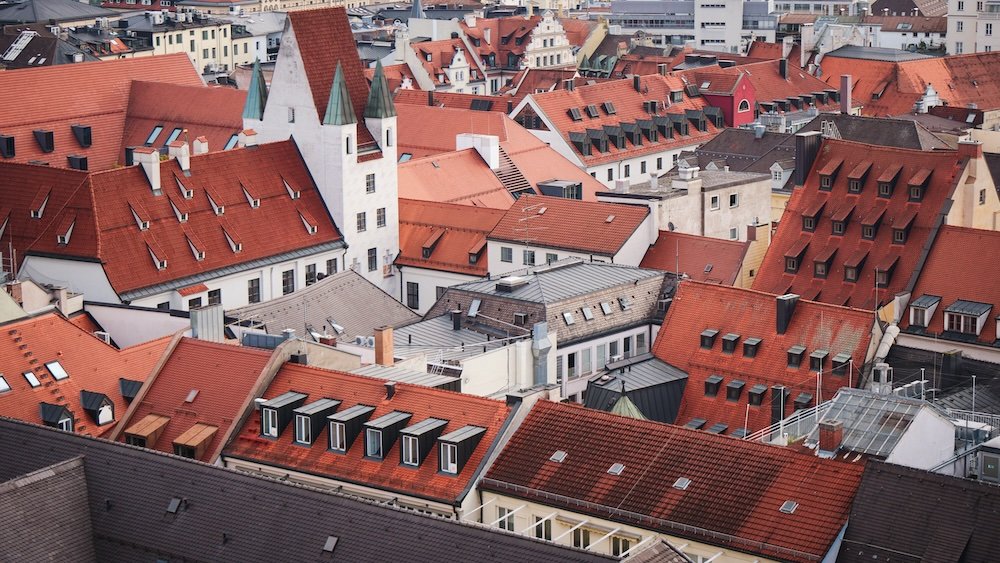
Tours For Visitors To Munich, Germany
Guided tours can deepen your connection to Munich, revealing stories and corners you might miss on a DIY stroll. From historical walks to modern-day explorations, the city offers a variety of things to do that align with different interests. Below, we outline some of the best tour options to make your Munich stay as enriching as possible.
Walking Tours
Historical Walking Tours typically start at Marienplatz, covering landmarks like the Frauenkirche, Viktualienmarkt, and the Hofbräuhaus. Guides weave in tales of Bavarian kings, medieval fortifications, and local legends—giving you a quick orientation of central Munich. Third Reich Tours delve into the city’s darker chapters, pointing out sites tied to the rise of Nazism. For a lighter angle, Street Art Tours or Architectural Walks highlight contemporary murals or modern designs. Walking tours tend to be budget-friendly and last around two to three hours, ideal for first-time visitors or those short on time.
- Group Size: Often small, ensuring a more personal experience.
- Free vs. Paid: Some tours are tip-based, while others require advance booking.
- Comfort: Wear sturdy shoes—cobblestones are charming but tough on feet.
Tip: Check weather forecasts before booking; rainy days can dampen the experience, literally.
Bike Tours
With broad streets and plenty of parks, Munich is bike-friendly. Bike Tours let you cover more ground than walking while still feeling connected to the surroundings. Many routes include the English Garden, where you can pause at the Chinese Tower for a refreshing beer. Guides often point out hidden gems, like graffiti-filled underpasses or lesser-known historical markers. You’ll also navigate scenic riverside paths, soaking in the city’s green spaces. These tours usually last about four hours, with breaks for photos or snacks.
- Difficulty Level: Generally moderate; the city’s terrain is mostly flat.
- Bike Rentals: Included in the tour price or arranged separately.
- Safety: Helmets provided; traffic rules are straightforward.
Tip: Bring a small backpack to store water, snacks, and any souvenirs picked up en route.
Beer and Brewery Tours
Munich’s beer heritage runs deep, making a Beer Tour a perfect cultural immersion. These guided excursions might start at smaller craft breweries or local pubs, culminating at larger beer halls like Hofbräuhaus or Augustiner. You’ll learn about the Reinheitsgebot (Beer Purity Law) and sample a variety of brews—from wheat beers to malty Dunkels. Some tours also incorporate local dishes, like pretzels or Obatzda cheese spread, to showcase beer-food pairings. Expect lively discussions, especially if you join a social group tour.
- Duration: Two to three hours, or longer for brewery visits.
- Booking: Often in the evening for a true Bavarian night out.
- Vibe: Casual, but can get rowdy if the group loves to cheer “Prost!”
Tip: Stay hydrated with water and pace your beer intake to fully appreciate the different flavors.
Day Trip Tours
Munich sits close to numerous day trip destinations. Neuschwanstein Castle Tours whisk you to the fairy-tale palace perched in the Bavarian Alps. Alternatively, you could explore Salzburg in Austria or the Dachau Concentration Camp Memorial for a somber, reflective experience. Guided day tours remove the hassle of navigating train schedules, ensuring you use your time efficiently. They often include commentary en route, giving you a deeper understanding of regional culture and history. While these can be pricier than self-planned outings, the convenience often proves worthwhile.
- Transport: Coaches, trains, or private vans depending on the operator.
- Group Size: Ranges from intimate minibus tours to large bus excursions.
- Flexibility: Some tours allow free time at the destination for personal exploration.
Tip: Check weather conditions for mountain trips—fog can obscure scenic views.
Specialty Tours
Looking for something different? Cooking Classes let you prepare local dishes like schnitzel or strudel, while Architecture Tours dive into the city’s modern designs from BMW Welt to Allianz Arena. History buffs might enjoy Guided Museum Visits at the Bavarian National Museum or the Deutsches Museum. Cinematic fans can book a Film Location Tour if you want to see spots featured in German or international movies. Specialty tours cater to niche interests, making them a unique way to personalize your Munich experience.
- Availability: Often limited, so reserve ahead.
- Cost: Varies widely based on complexity and duration.
- Language: Many specialty tours offer English options; confirm in advance.
Tip: Read recent reviews to gauge the quality and authenticity of specialized tours.
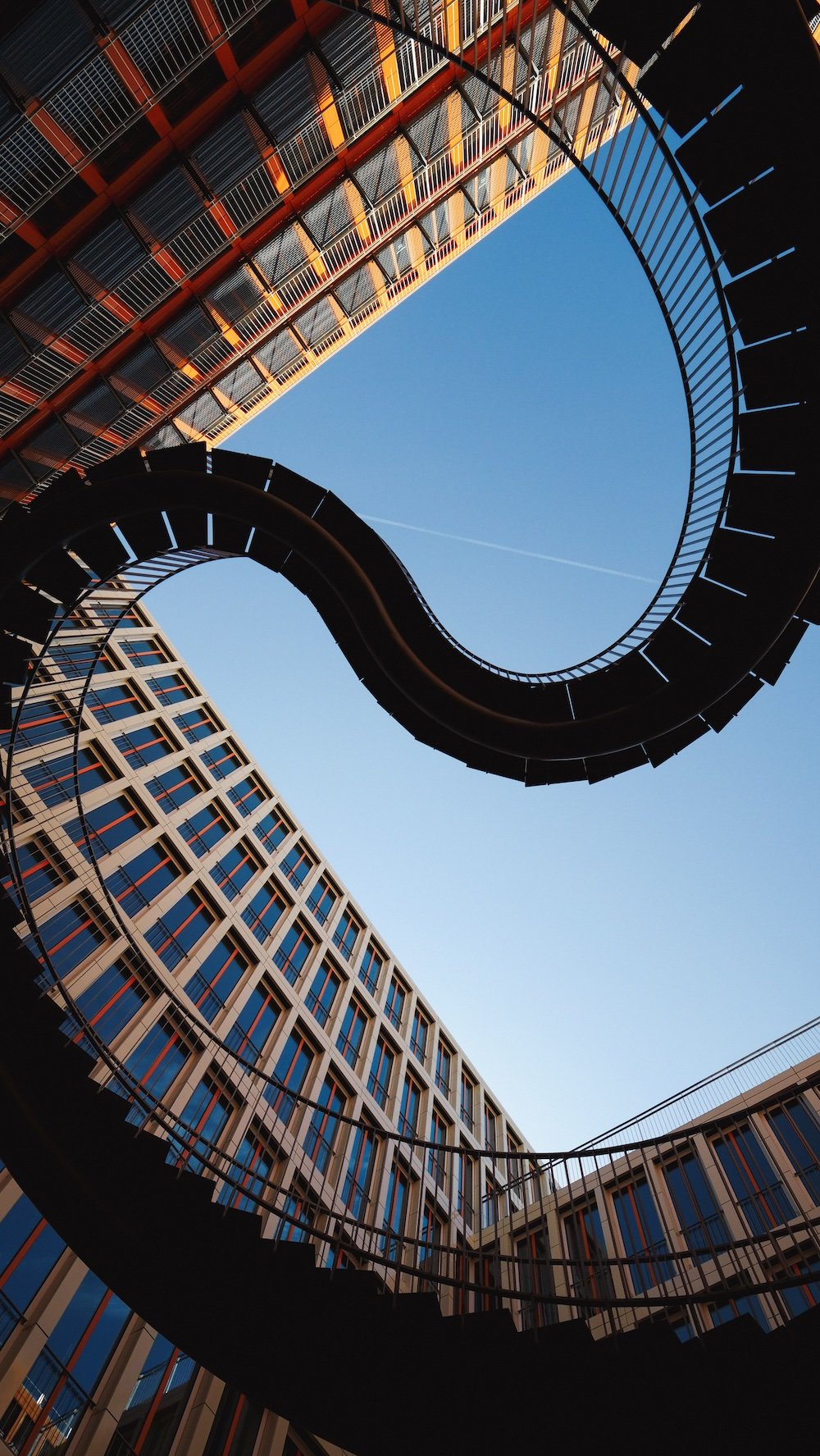
Munich Accommodations Guide: Hotels, Guesthouses and Hostels
Finding the right place to stay in Munich can greatly shape your trip. Whether you crave luxury pampering, a budget-friendly bunk, or a cozy home-away-from-home, the city offers a range of things to do and equally varied lodging options. Let’s unpack some key categories.
Luxury Hotels
Munich hosts several five-star properties near iconic spots like Marienplatz or the Maximilianstrasse shopping district. High-end brands—think Hotel Vier Jahreszeiten Kempinski or Mandarin Oriental—combine opulent decor with top-tier amenities like spas, fine dining, and concierge services that can arrange private tours. The local flair often seeps in via Bavarian-inspired interiors or an on-site beer hall. If cost isn’t a barrier, luxury hotels can provide a pampering retreat amid your sightseeing hustle. Some even boast spectacular rooftop views of the Alps on clear days.
- Who It’s For: Honeymooners, business travelers, or those seeking indulgence.
- Budget Range: 250–500+ EUR per night.
- Booking Tips: Off-peak times (e.g., winter or non-festival periods) might yield deals.
Tip: Inquire about special “stay & dine” packages for an elevated culinary experience.
Mid-Range Hotels
Mid-range hotels are plentiful, balancing comfort and cost. Areas like Haidhausen, Schwabing, or near Hauptbahnhof (main train station) offer modern rooms often featuring contemporary design. Hotel chains like Hampton by Hilton, Holiday Inn, or local independents typically provide Wi-Fi, breakfast buffets, and easy access to public transport. You’ll still enjoy a decent level of service—think on-site fitness rooms or small bars—without the luxury price tag. For many travelers, this category hits the sweet spot of reliability and convenience.
- Who It’s For: Families, couples, or solo travelers wanting a comfortable base.
- Budget Range: 100–200 EUR per night.
- Booking Tips: Check for free cancellation policies, especially if your schedule is in flux.
Tip: Stay slightly outside the city center to find better rates, then use public transport to zip around.
Guesthouses (Pensionen)
Bavarian guesthouses provide an intimate, often family-run atmosphere. They might lack the bells and whistles of big hotels, but they compensate with genuine warmth. Expect simpler rooms, communal dining areas, and homemade breakfasts featuring local specialties. Some are nestled in historic buildings or quieter residential zones, offering a taste of everyday Munich life. This setup encourages friendly chats with your hosts, who can offer insider tips on lesser-known attractions. If cozy ambiance matters more than luxury, a Pension might be your perfect fit.
- Who It’s For: Cultural enthusiasts and budget-conscious travelers.
- Budget Range: 60–120 EUR per night.
- Booking Tips: Book early; these properties have limited rooms and fill up fast.
Tip: Ask your hosts about local festivals or markets—they often know hidden gems that official guides miss.
Hostels
Munich’s hostels vary from party-centric hotspots to tranquil designer spaces. Many cluster around the main train station, ideal for easy arrivals and departures. You’ll find dorms for ultra-cheap stays, but also private rooms for a bit more comfort. Communal lounges or kitchens encourage mingling, making hostels great for solo travelers who want to meet new people. Basic amenities like lockers, Wi-Fi, and laundry are common, though plush extras can differ widely. If you’re open to a lively scene and minimal frills, hostels stretch your budget so you can enjoy more local experiences.
- Who It’s For: Backpackers, students, or sociable travelers on a tight budget.
- Budget Range: 20–50 EUR for a dorm bed; 60–100 EUR for a private room.
- Booking Tips: Check reviews for cleanliness and location; some hostels are more party-oriented than others.
Tip: Bring earplugs and a padlock—dorm life can be noisy, and lockers require personal locks.
Neighborhood Highlights
- Old Town (Altstadt): Pricier but unbeatable for classic architecture and walkable attractions.
- Schwabing: Artistic flair, near the English Garden, with a bohemian vibe.
- Haidhausen: Trendy cafes, scenic squares, close to cultural venues like Gasteig.
- Maxvorstadt: Museum quarter, student population, lively bars.
Our Travel Video From Salzburg, Austria on Samuel and Audrey YouTube Channel: Nomadic Samuel + That Backpacker hosting
Day Trips From Munich, Germany
Munich’s central location in Bavaria unlocks a host of exciting day trips that add depth to your things to do list. From fairy-tale castles to historic towns, these escapes let you see more of southern Germany’s diverse landscapes and cultural treasures. Let’s explore some top picks.
Neuschwanstein Castle
Neuschwanstein Castle is the quintessential storybook fortress, perched among the Bavarian Alps near Füssen. Commissioned by King Ludwig II in the 19th century, it boasts spired turrets, ornate interiors, and breathtaking mountain vistas. Many travelers couple it with a visit to nearby Hohenschwangau Castle, Ludwig’s childhood home. You can access Neuschwanstein by train and bus, or join an organized tour to simplify logistics. Be prepared for a bit of walking uphill or opt for a horse-drawn carriage to add a romantic touch. Crowds can be intense, so booking your entry tickets in advance helps you skip lines.
- Travel Time: ~2 hours by train from Munich Hbf (plus a short bus ride).
- Highlight: Marienbrücke bridge for postcard-perfect views of the castle.
- Tour Duration: Guided tours inside the castle last about 30 minutes.
Tip: Book your castle entry online to secure your preferred time slot and avoid last-minute disappointment.
Dachau Concentration Camp Memorial
For a solemn, educational experience, visit the Dachau Memorial site, located just outside Munich. Opened in 1933, Dachau was Nazi Germany’s first regular concentration camp. Today, the memorial includes documentary exhibits, reconstructed barracks, and memorial chapels. It’s a stark but crucial reminder of the Holocaust, offering insights into this dark chapter of history. Guided tours provide deeper context; however, individuals can also explore with an audio guide. While emotionally heavy, the visit fosters reflection on human rights and resilience, underscoring the importance of never forgetting.
- Travel Time: ~25 minutes by S-Bahn to Dachau station, plus a short bus ride.
- Admission: Free, though guided tours have fees.
- Etiquette: Maintain respectful silence in key areas.
Tip: Allow at least three hours to fully absorb the exhibits and memorial spaces.
Salzburg, Austria
Hop across the border for a taste of Austria’s charm in Salzburg, famously known as the birthplace of Mozart and the setting for “The Sound of Music.” The Baroque Old Town wows with ornate churches, narrow lanes, and the striking Hohensalzburg Fortress perched overhead. Musical heritage resonates everywhere—from Mozart’s home to the lively street performances. A direct train from Munich takes about 1.5 to 2 hours, making a day trip feasible. Sample Austrian pastries, admire centuries-old architecture, and soak in the alpine backdrop.
- Highlight: Mirabell Palace gardens for their floral displays and city views.
- Cultural Note: Salzburg’s festival scene is rich with classical concerts year-round.
- Shopping: Grab Mozartkugel chocolates as souvenirs.
Tip: Buy a Bavaria Ticket or similar train pass for cost-effective regional travel to Salzburg and back.
Garmisch-Partenkirchen & Zugspitze
Outdoor enthusiasts will adore Garmisch-Partenkirchen, a mountain resort famed for skiing, hiking, and fresh alpine air. The town’s frescoed buildings and mountain vistas exude quintessential Bavarian charm. Nearby stands Zugspitze, Germany’s highest peak (2,962 meters). A cable car or cogwheel train lifts you to the summit for panoramic views spanning four countries. In summer, you can hike well-marked trails or simply relish the crisp altitude. In winter, skiing and snowboarding beckon thrill-seekers.
- Travel Time: ~1 hour 20 minutes by regional train to Garmisch-Partenkirchen.
- Peak Access: Cable car (Eibsee-Seilbahn) or cogwheel train from Eibsee station.
- Seasonal Tips: Summer offers hiking; winter transforms the area into a snowsport hub.
Tip: Arrive early on clear days for minimal crowds and optimal visibility at the summit.
Regensburg
Regensburg is a UNESCO-listed medieval city on the Danube River, brimming with Gothic spires, ancient stone bridges, and Roman-era remnants. A stroll through the Old Town reveals well-preserved patrician houses and hidden courtyards. The Regensburg Cathedral impresses with its soaring architecture, while riverside cafés invite leisurely breaks. Boat tours on the Danube provide a scenic vantage of the city’s skyline. A direct train ride takes about 1–1.5 hours from Munich, making it a manageable day trip for history buffs and architecture lovers alike.
- Highlights: Stone Bridge, Porta Praetoria (Roman gate), and the Old Town Hall.
- Local Specialty: Sausage Kitchen (Wurstkuchl) by the river claims to be the oldest sausage restaurant.
- Time Warp: Feel the layers of Roman, medieval, and modern influences in one compact space.
Tip: Join a guided walking tour to unearth hidden stories behind the centuries-old facades.
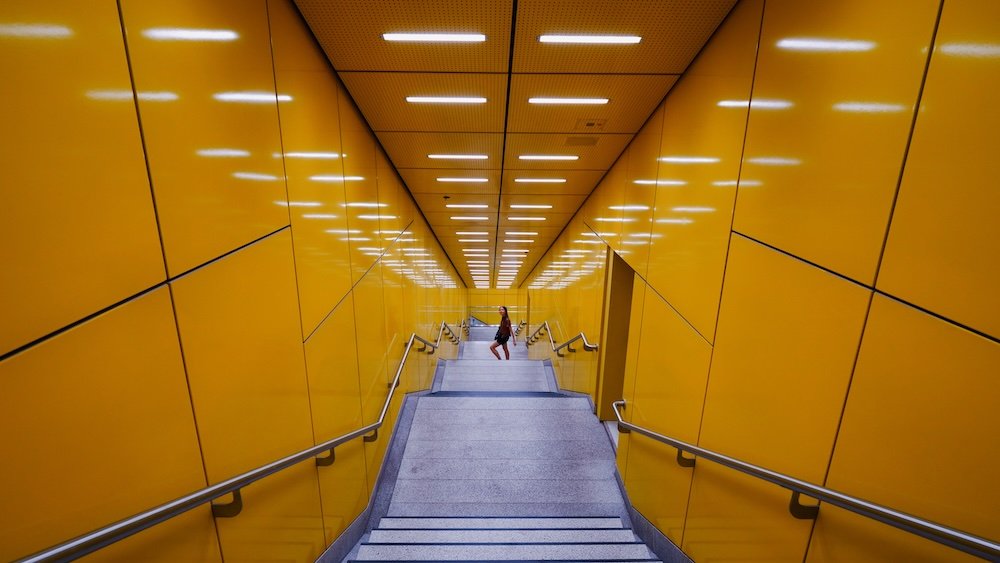
Munich Transportation Guide
Navigating Munich is a breeze once you understand the city’s efficient transport network. From the U-Bahn trains to bikes and everything in between, you’ll find plenty of things to do and convenient ways to get there. Let’s break down the primary modes of getting around.
Public Transport Basics
Munich’s MVV (Münchner Verkehrs- und Tarifverbund) system integrates U-Bahn (subway), S-Bahn (suburban train), tram, and bus routes under one ticket structure. The network is zoned (rings), but most tourist sites lie in the central Inner Zone. Single tickets are fine for sporadic trips, but day passes or the Munich CityTourCard can be more cost-effective if you’ll hop around frequently. Machines at stations accept coins, bills, and cards—languages include English. Validate your ticket in the blue stamping machines before boarding if it’s not pre-stamped.
- Frequency: Peak times see U-Bahn and S-Bahn trains every few minutes.
- Night Service: Limited U-Bahn lines run late on weekends; night buses cover other routes.
- App: “MVG Fahrinfo” offers real-time schedules and route planning.
Tip: Check multi-day passes if you plan an extended stay, as they often include discounts on attractions.
U-Bahn and S-Bahn
The U-Bahn covers central Munich swiftly, with lines typically identified by blue signs and numbers like U1, U2, etc. The S-Bahn radiates out to suburban areas and regional points, also connecting to Munich Airport (S1 or S8 lines). Most lines intersect at major hubs like Hauptbahnhof (main station), Marienplatz, or Odeonsplatz, making transfers convenient. Trains are generally punctual, though rush-hour crowds can be tight. Always stand on the right side of escalators if you’re not walking, to let others pass on the left.
- Service Hours: Approximately 4:30 AM to 1:00 AM, with variations by line.
- Announcements: Often in German and English at central stations.
- Accessibility: Elevators or ramps exist in newer or renovated stations, though some older stations can pose challenges.
Tip: Download a free U-Bahn map to keep offline in case of spotty internet or battery issues.
Trams and Buses
Munich’s trams whisk you through charming streets, offering scenic views of architecture and daily life. They supplement areas not reached by the U-Bahn or S-Bahn, especially near neighborhoods like Schwabing or Haidhausen. Buses fill remaining gaps, venturing into smaller residential zones or weaving through city traffic. Bus lines can be slower, but they’re perfect for short hops. Both trams and buses accept MVV tickets, so no separate pass is needed.
- Stops: Digital displays show arrival times in real time.
- Busy Routes: Popular lines can be crowded, especially during peak commuting hours.
- Conduct: Validate your ticket upon boarding if it’s not already stamped.
Tip: Position yourself near the exit when nearing your stop; crowds can block your way in peak times.
Bikes & E-Scooters
Munich is bike-friendly, with numerous cycle lanes and signposted routes. Bike rentals are available at shops or via Call a Bike stations. E-scooters from brands like Lime or Tier dot the city, but mind local regulations—stick to bike lanes or roads, not sidewalks. Helmets aren’t mandatory but are highly recommended. Check docking policies for e-scooters—some companies require you to park in designated areas to avoid fines.
- Seasonal: Winter might be icy, so plan accordingly if you’re not used to cold-weather cycling.
- Locks: Always lock your bike; theft can happen, especially in busy districts.
- Scenic Routes: Ride through the English Garden or along the Isar River for a leisurely outing.
Tip: Download relevant apps (Call a Bike, Lime, Tier) for quick rentals on the go.
Taxis and Rideshares
You’ll spot taxis near major train stations, tourist sites, or you can hail them on the street. Munich’s taxis are metered, and fares can add up fast if you’re covering longer distances. Rideshare apps like Uber exist but face regulatory constraints, so availability might be limited. If cost is a concern, rely on public transport for routine travel, saving taxis for late-night returns or heavy luggage days.
- Card Payments: Many taxis accept cards, but confirm beforehand.
- Airport Runs: Taxis to Munich Airport can cost 70–80 EUR depending on traffic.
- Contact: Local taxi hotline or an app can order a cab within minutes.
Tip: Share the ride with friends if possible, splitting costs for a budget-friendly approach.
Driving in Munich
Renting a car is optional if you stick to city attractions. Traffic congestion in the center can be intense, and parking is both scarce and pricey. If you plan day trips to rural areas or the Alps, a car may be helpful. Make sure you’ve got an Umweltplakette (environmental sticker) for low-emission zones if you’re driving in city center. Gasoline is expensive, so factor that into your budgeting.
- Parking: Public garages or “Park & Ride” facilities on the outskirts.
- Speed Limits: Typically 50 km/h in urban areas; watch for signs.
- Road Signs: Mostly in German, but standard European symbols apply.
Tip: Reserve a parking spot if your hotel offers it, especially during major events like Oktoberfest.
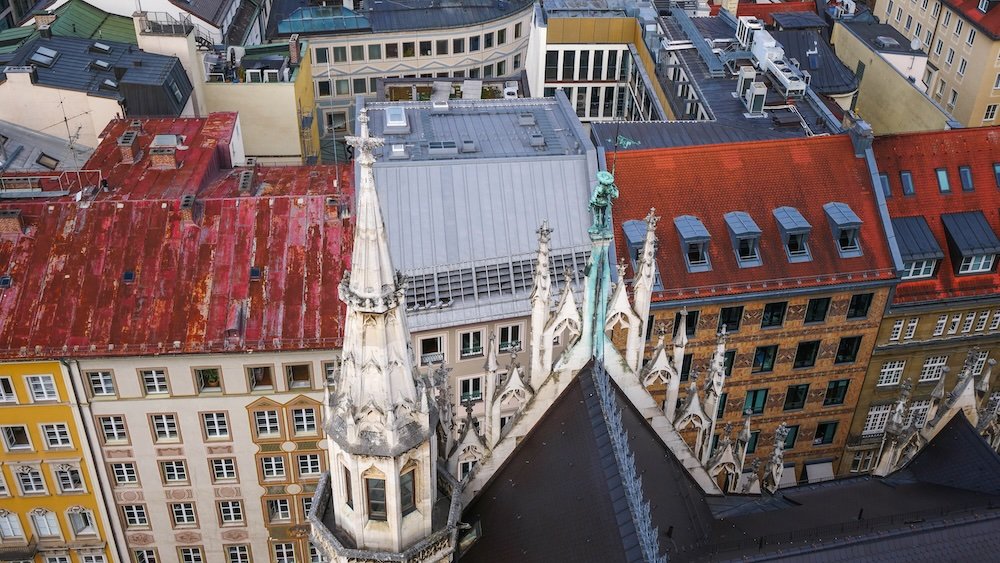
Munich Travel Questions Answered: Practical Tips, Local Insights & Smart Planning Advice
How many days do I really need in Munich for a first visit?
Three days. That’s usually the sweet spot for a first-timer who wants to see the highlights without feeling rushed. With 3 full days you can cover the Old Town, a couple of churches and viewpoints, the English Garden, at least one brewery or beer garden, plus a museum or two. If you’re planning big day trips like Neuschwanstein, Dachau, or Salzburg, stretch it to 4–5 days so you’re not spending every day on trains and buses. Munich is a city that rewards a bit of lingering, so if you can spare the time, you won’t regret the extra night or two.
What’s the best time of year to visit Munich for good weather and fewer crowds?
Shoulder season. Spring (April–May) and autumn (late September–October outside of Oktoberfest dates) tend to offer mild temperatures, decent daylight, and fewer crowds than peak summer. July and August can be warm, busy, and pricey, with popular beer gardens and markets packed. Winter is atmospheric with Christmas markets and cozy pubs, but days are short and it can be damp or snowy. If you’re flexible, aim for May or early October for a nice balance of reasonable hotel rates, comfortable weather, and a lively but not chaotic vibe.
Is Munich an expensive city to visit and what kind of daily budget should I expect?
It depends. Compared to other German cities, Munich is on the pricier side, especially for accommodation and eating out. A shoestring backpacker might scrape by on 70–90 EUR per day with a hostel dorm, public transport, and cheap eats. A mid-range traveler is more realistically looking at 130–200 EUR per day for a decent hotel, a couple of restaurant meals, transport, and attractions. If you’re staying in the Altstadt, drinking a few big beers, and doing day trips, it’s easy to creep above 200–250 EUR per day. Using lunch specials, markets, and transit day tickets is where you can really save.
What area should I stay in if it’s my first time in Munich?
Centrally. For a first visit, the Altstadt (Old Town) puts you in walking distance of Marienplatz, Viktualienmarkt, and several key sights. It’s convenient but also the most expensive. If you want central but slightly more local, look at Maxvorstadt (museums, cafes, student vibe), Schwabing (bohemian, near the English Garden), or Haidhausen (village-y streets and good restaurants). Staying near Hauptbahnhof is handy for trains and airport access but can feel a bit more functional and rough around the edges at night, so it’s great for practicality rather than charm.
How do I get from Munich Airport to the city center the easiest way?
Simple. The S-Bahn lines S1 and S8 run from Munich Airport to the city roughly every 10 minutes and take about 35–45 minutes to reach central stops like Marienplatz or Hauptbahnhof. You can buy a single ticket or a day pass that covers the airport zone plus inner city. For small groups, regional or group tickets often work out cheaper than individual fares. Taxis and ride apps are available but cost significantly more—think 70–90 EUR depending on time and traffic. Unless you’re arriving super late with huge luggage, the train is usually the best choice.
Do I need to rent a car in Munich, or is public transport enough?
Public transport is plenty. Munich’s U-Bahn, S-Bahn, trams, and buses are well integrated and cover essentially everything you’ll want to visit in the city. For most trips—even ones that include Neuschwanstein, Dachau, Garmisch-Partenkirchen, or Salzburg—trains and regional buses work well. A rental car only really becomes helpful if you’re stringing together a lot of small villages, remote alpine hikes, or road tripping deeper into Bavaria and Austria. Inside the city, parking is a headache and expensive, and low-emission rules add another layer of admin.
Is Munich safe for solo travelers and at night?
Yes. Munich is generally considered one of the safest big cities in Europe, with low violent crime rates and a pretty relaxed feel even after dark. The usual big-city common sense still applies: keep an eye on your valuables on public transport, watch your drink in busy beer halls, and avoid super-drunk crowds around festival areas late at night. Around Hauptbahnhof you might see more visible homelessness or people hanging around, but it’s usually more about atmosphere than danger. For solo travelers, including women, walking between central neighborhoods at night is common and typically feels fine.
Are there any common tourist mistakes or etiquette slips I should avoid in Munich?
Absolutely. A few things trip visitors up. First, Bavarians take punctuality seriously, so showing up late to tours or reservations is frowned upon. Second, jumping straight to first names can feel too familiar—using “Herr” or “Frau” plus the surname in more formal settings is still appreciated until you’re invited to be casual. In beer gardens, remember to share tables and not “reserve” entire benches with bags if it’s busy. And while Oktoberfest is famous, many locals actually prefer quieter, more traditional beer gardens, so don’t assume Hofbräuhaus is the only “real” experience in town.
How do Sundays work in Munich? Are shops and attractions open?
Quiet. German shop-closing laws mean most regular stores are closed on Sundays: you won’t be doing big shopping runs that day. However, restaurants, beer gardens, many museums, and major sights remain open as usual, and bakeries, petrol stations, and shops at train stations are your go-tos for last-minute snacks or essentials. Sunday ends up being a great day for slow travel: long park walks, lazy brunches, and museum visits instead of running errands. Just plan your groceries and shopping for Saturday so you’re not caught off guard.
How beer-heavy is Munich really if I’m not a big drinker?
More flexible than you might think. Munich is undeniably beer-centric, with breweries, beer gardens, and Oktoberfest branding everywhere, but you’re not going to be the only person sipping something else. Most beer halls and gardens serve alcohol-free beer, Radler (beer mixed with lemonade), wines, and soft drinks. Munich also has a strong coffee culture, plenty of wine bars, and an emerging craft-cocktail scene. You can absolutely enjoy the social side of beer gardens with a Spezi or Apfelschorle in hand and still soak up the atmosphere.
Is Munich suitable for kids and families?
Yes. Munich is very family-friendly. Parks like the English Garden, playgrounds scattered across the city, and kid-friendly museums (the Deutsches Museum is a huge hit) all make it great for younger travelers. Public transport is easy with strollers, and restaurants are used to families, especially in the daytime. Many beer gardens have play areas where kids can burn off energy while adults relax at the tables. Just keep in mind that very late evenings in busy beer halls or around festival grounds can get loud, boozy, and a bit overwhelming for little ones.
What should I wear and pack for a typical Munich trip?
Layers. The weather can swing from sunny and warm to chilly and wet in a single day, especially in shoulder seasons. Bring a lightweight but waterproof jacket, comfortable walking shoes, and at least one warmer layer like a fleece or sweater. In winter you’ll want proper cold-weather gear: hat, gloves, scarf, and insulated footwear. If you’re planning to visit churches, having modest clothing (covered shoulders, no super-short shorts) is respectful. For beer halls, casual is totally fine—no need to pack lederhosen unless you’re all-in on the festival experience.
How busy and intense is Oktoberfest, and should I plan my trip around it or avoid it?
It depends. If you love big crowds, live music, and the idea of massive festival tents full of singing and beer, Oktoberfest can be a once-in-a-lifetime experience. But it’s also loud, expensive, and incredibly busy—accommodation prices skyrocket, reservations for tents are hard to get, and evenings around Theresienwiese can feel overwhelming. If you’re more into relaxed sightseeing, consider visiting just before or after the festival dates, or pop in for a daytime visit to sample the atmosphere without committing your entire trip to it. Munich has a lot going on beyond those two wild weeks.
What’s the best way to combine Munich with day trips like Neuschwanstein, Dachau, or Salzburg?
Plan strategically. I like using Munich as a base for 3–5 nights and then assigning one or two full days to specific excursions. Neuschwanstein works best as a full day with tickets booked well ahead; Dachau is a half-to-3/4-day visit that’s emotionally heavy, so don’t stack a big party night on either side. Salzburg or Garmisch-Partenkirchen each deserve a full day, but if you’re a slow traveler you might consider an overnight. Bavarian regional tickets and cross-border rail passes can reduce costs if you’re doing multiple rides, so it’s worth checking the current offers on the Deutsche Bahn website.
Are there any local customs in beer gardens and beer halls I should know about?
Definitely. In traditional beer gardens, self-service areas expect you to grab your food from a counter and return your tray; in full-service sections, staff handle everything at the table. Sharing tables is normal—just ask politely if a spot is free before sitting down. Tipping is usually about 5–10% rounded up, and you typically pay your server directly at the table rather than at a central till. When you cheers, look people in the eye and say “Prost!” before taking a sip. And don’t clink glass steins too aggressively; they’re sturdy, but not indestructible.
Munich Travel Guide: Conclusion
Let yourself wander. Munich rewards curiosity. You might stumble upon a quiet courtyard where a violinist practices, or a neighborhood café that serves the softest pretzels you’ve ever tasted. Don’t hesitate to hop on the tram to explore lesser-known districts like Schwabing or Glockenbachviertel, each brimming with local color and community spirit. And if you crave a break from the urban hustle, green escapes like the English Garden or Bavaria Park beckon you to slow down and breathe.
Of course, no Munich experience is complete without at least one toast in a traditional beer hall, where the tables are shared, the laughter is loud, and friendships spark over clinking steins. Or, if that’s not your scene, you’ll still find a cozy nook in a modern cafe or a quaint wine bar. The city’s inclusivity is part of its magic—everyone can carve out a piece of Munich that resonates with them. It’s a mosaic of history, culture, and new ideas, waiting for you to piece together in your own way.
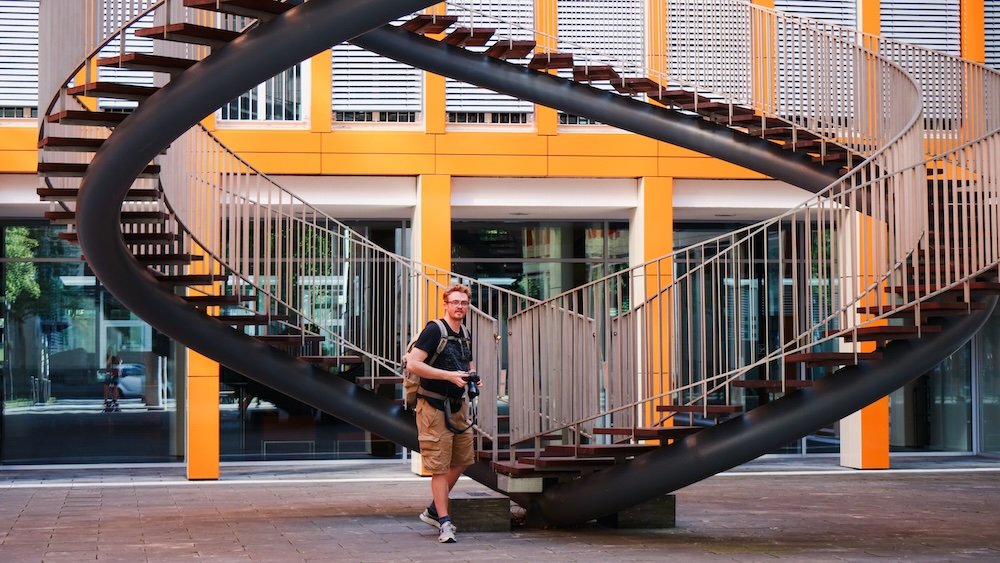
Final Thoughts
As you plan your onward journey—or linger a bit longer—recall that Munich is also a gateway to other adventures: day trips to Neuschwanstein Castle, alpine hikes around Garmisch-Partenkirchen, or a quick jaunt across the border to Salzburg. The connections run deep, both historically and geographically, tying Bavaria into Europe’s larger tapestry. So don’t be surprised if your quick trip evolves into a longing to see more, to peel back more layers, to keep exploring.
Prost, and may your Munich adventure be everything you hoped for—and a little more!
